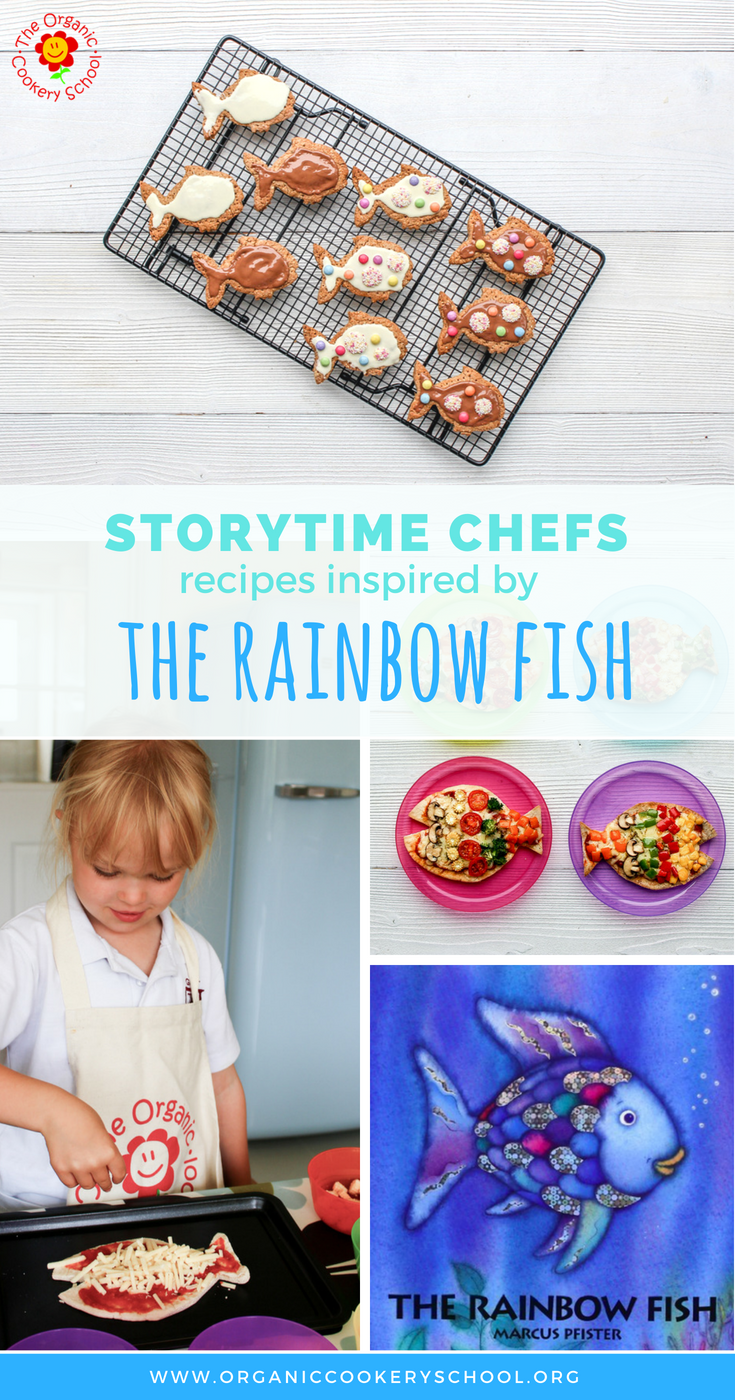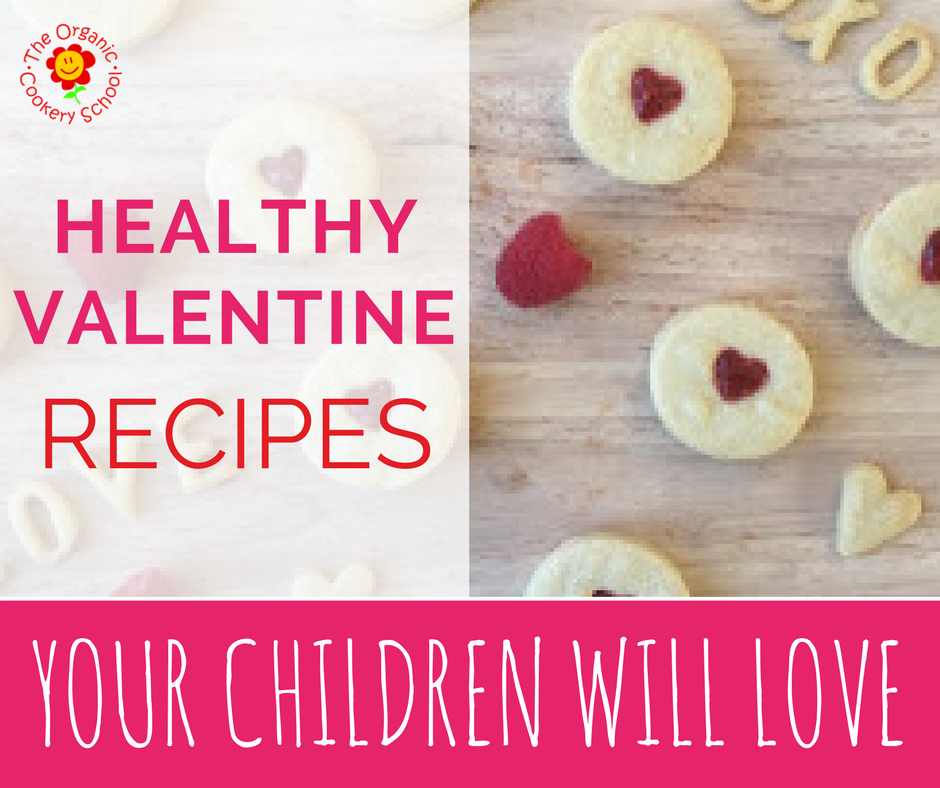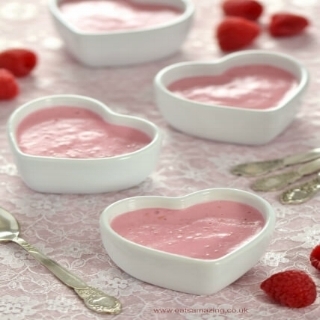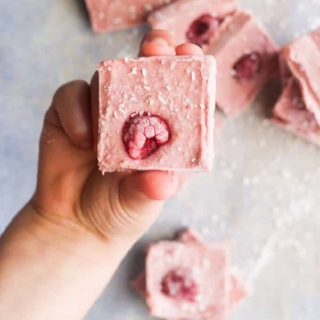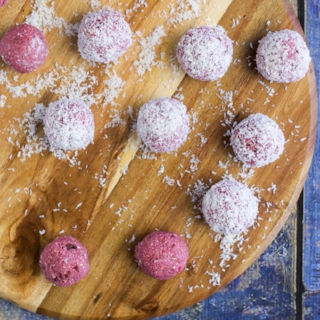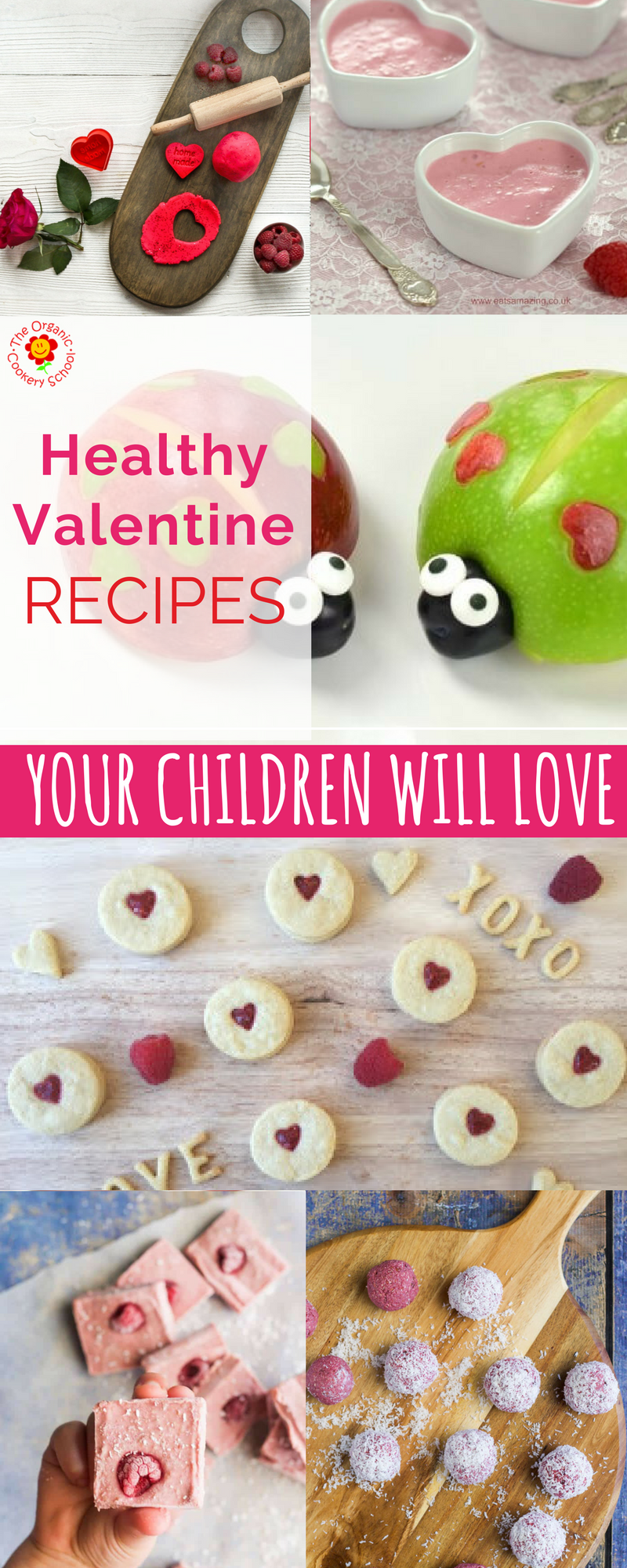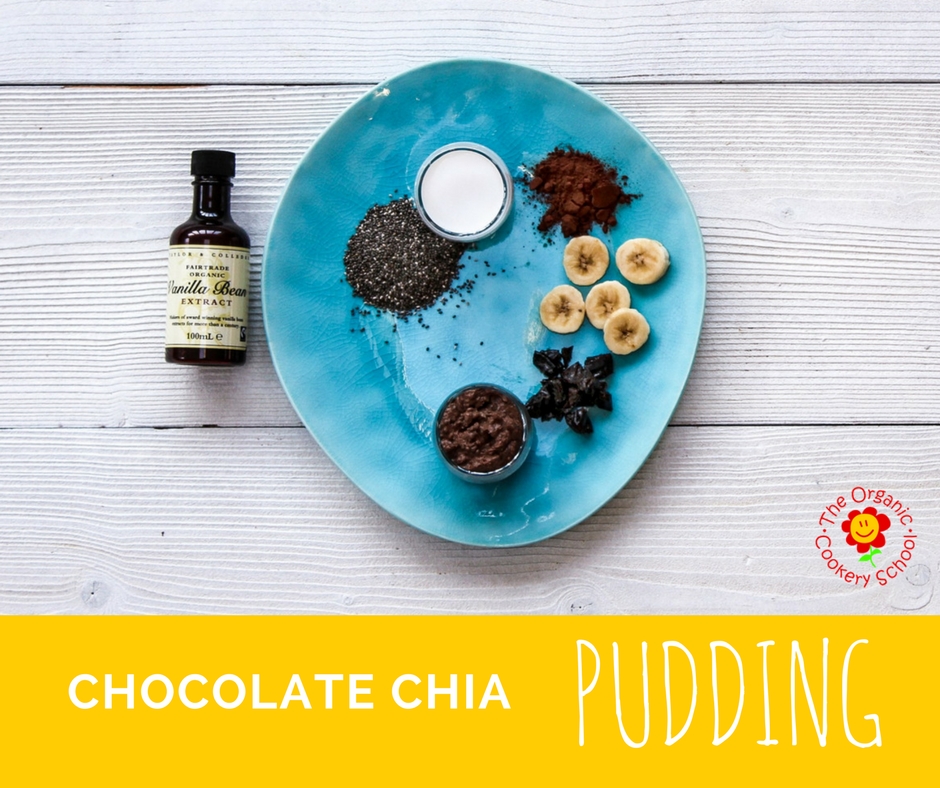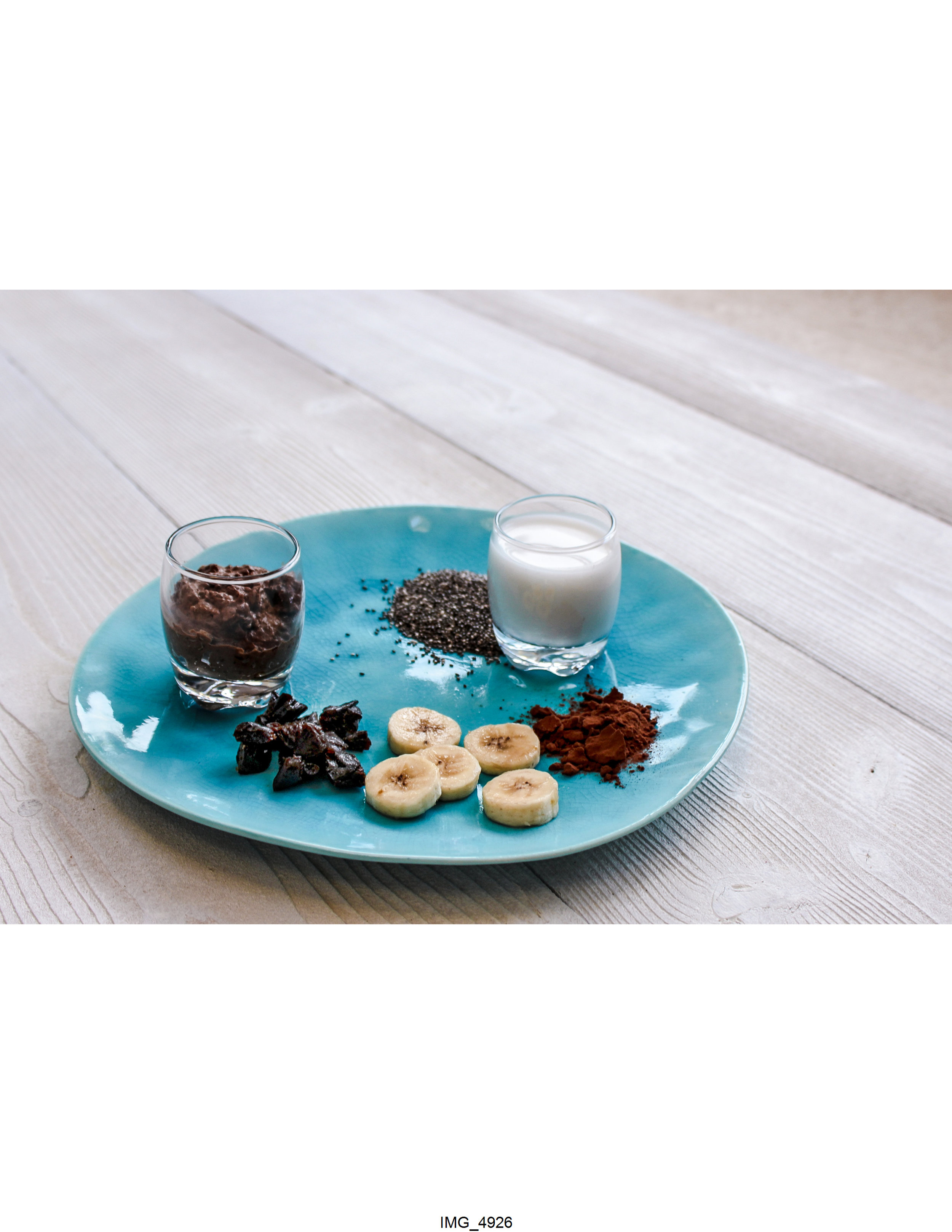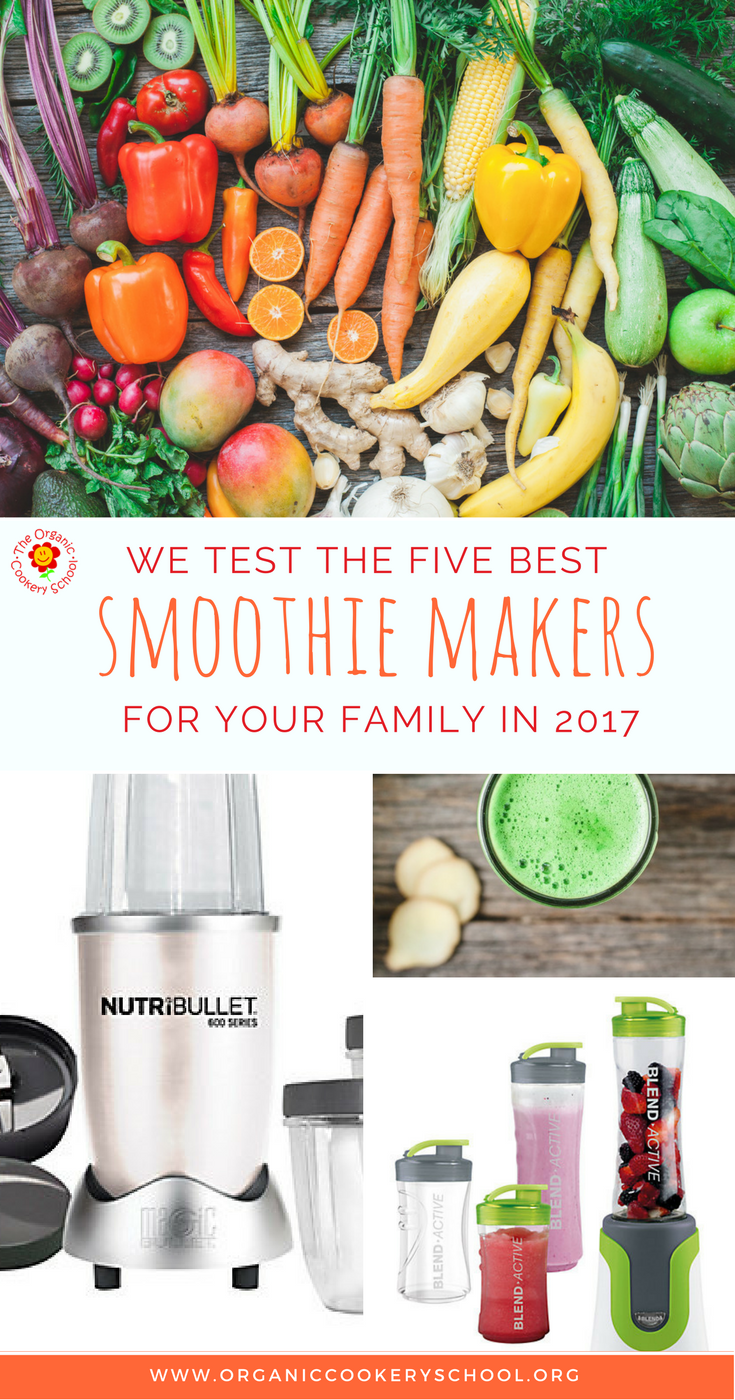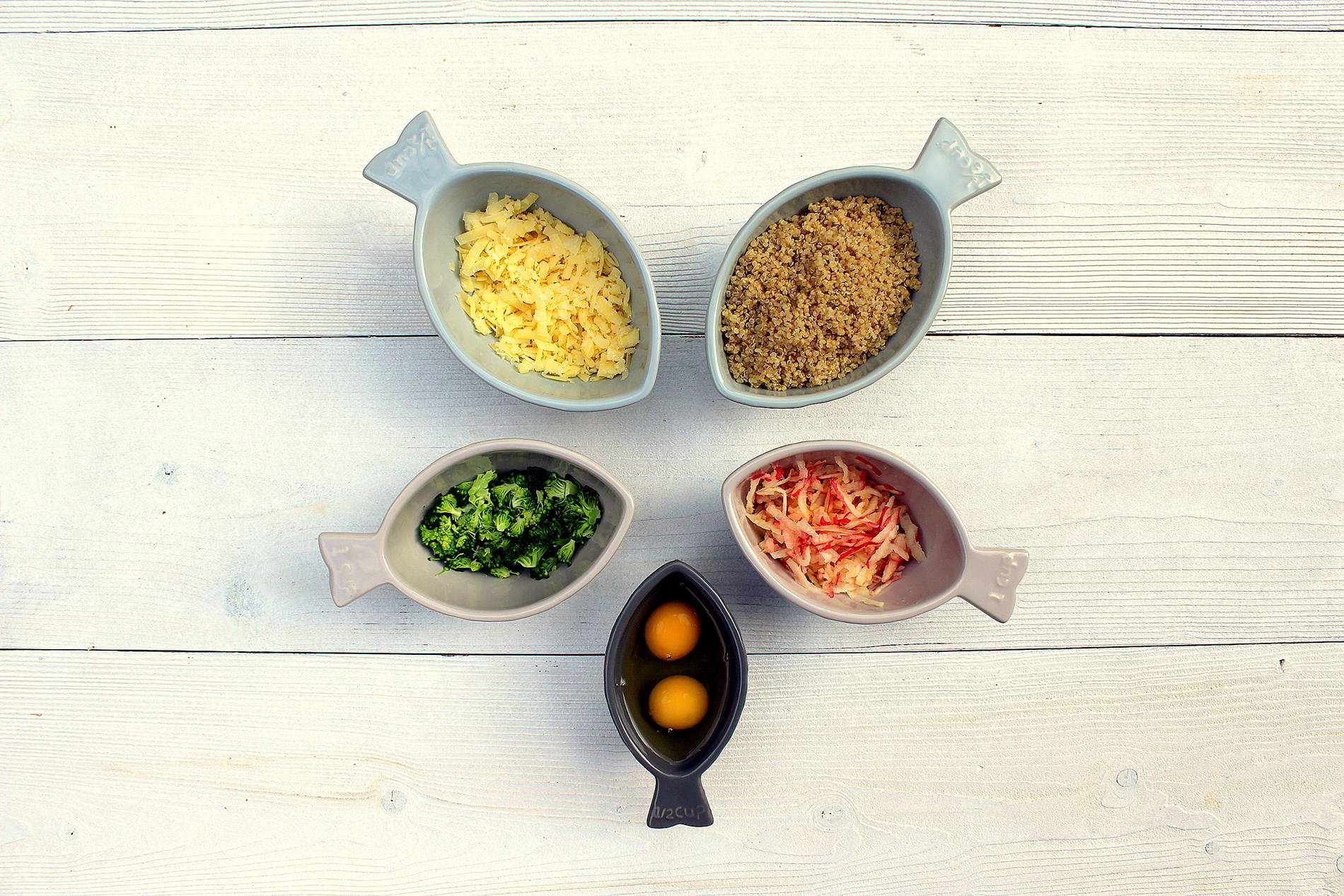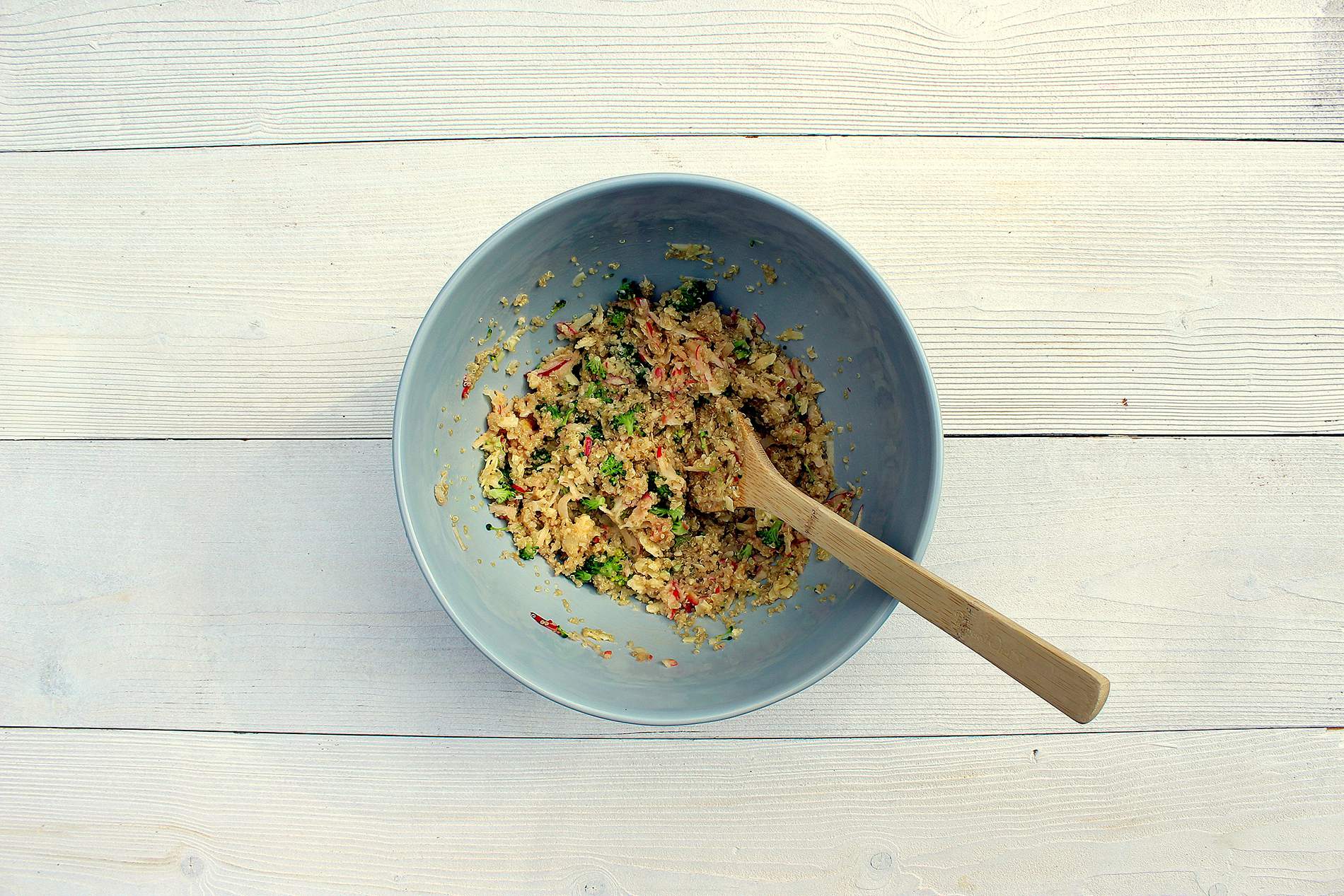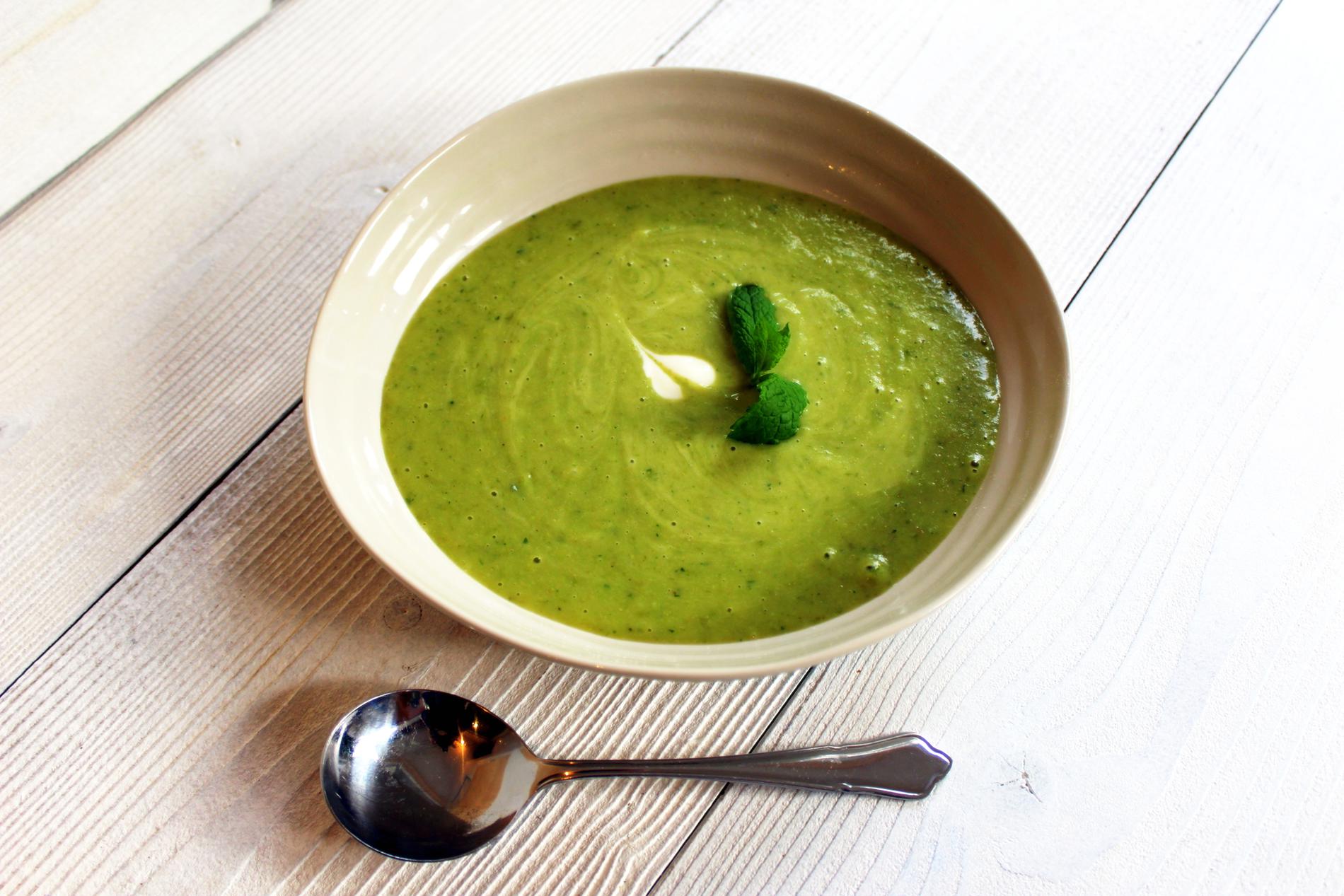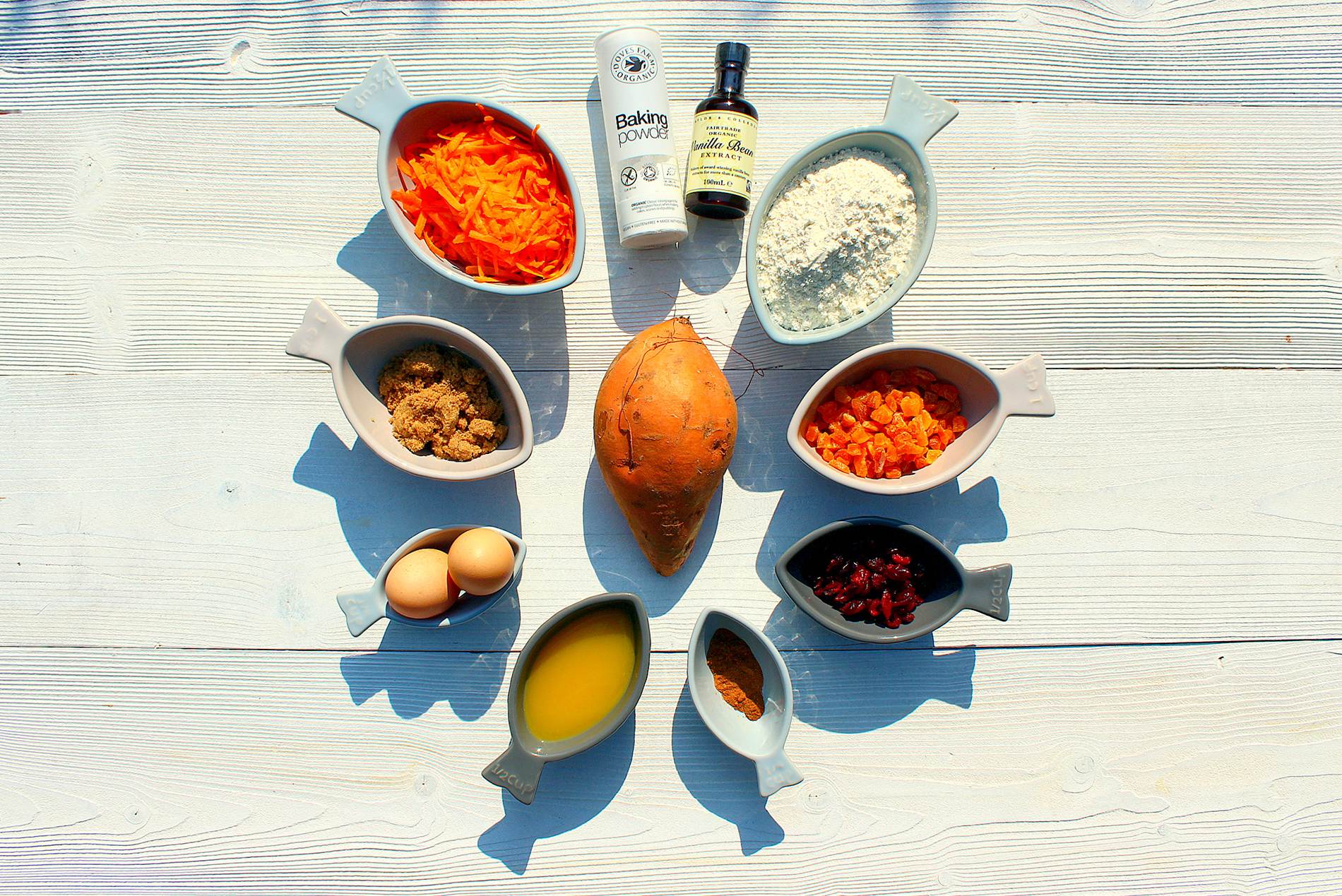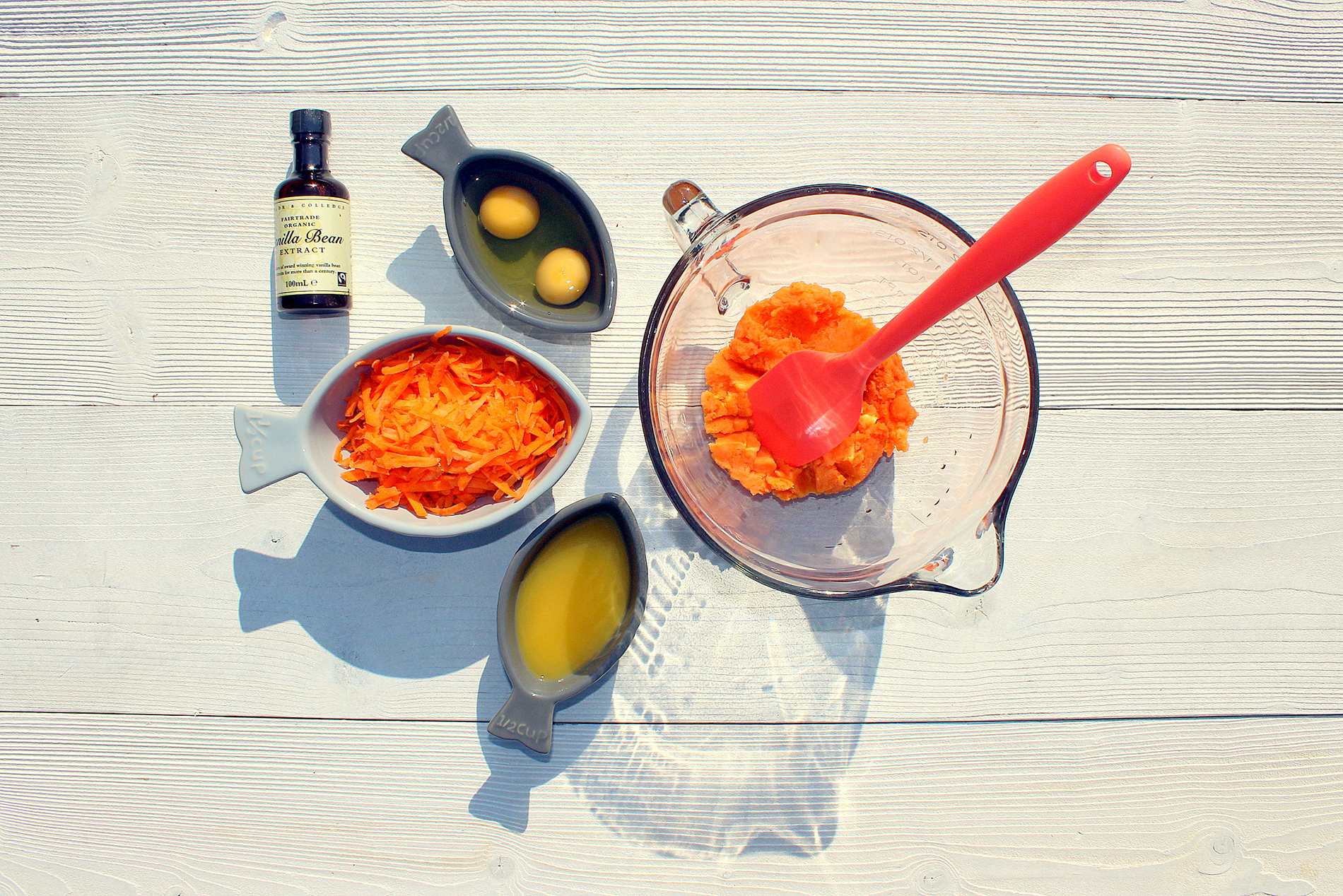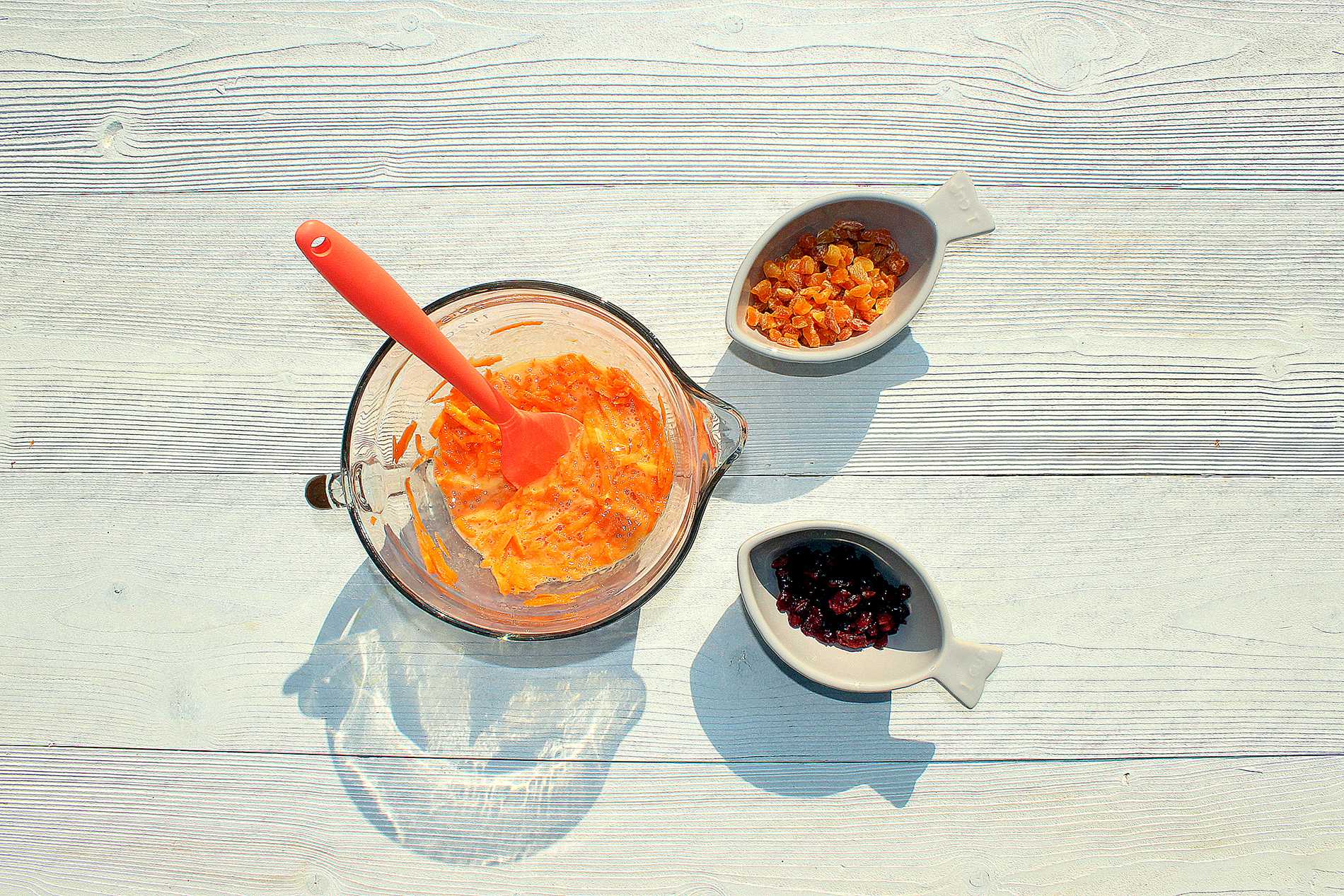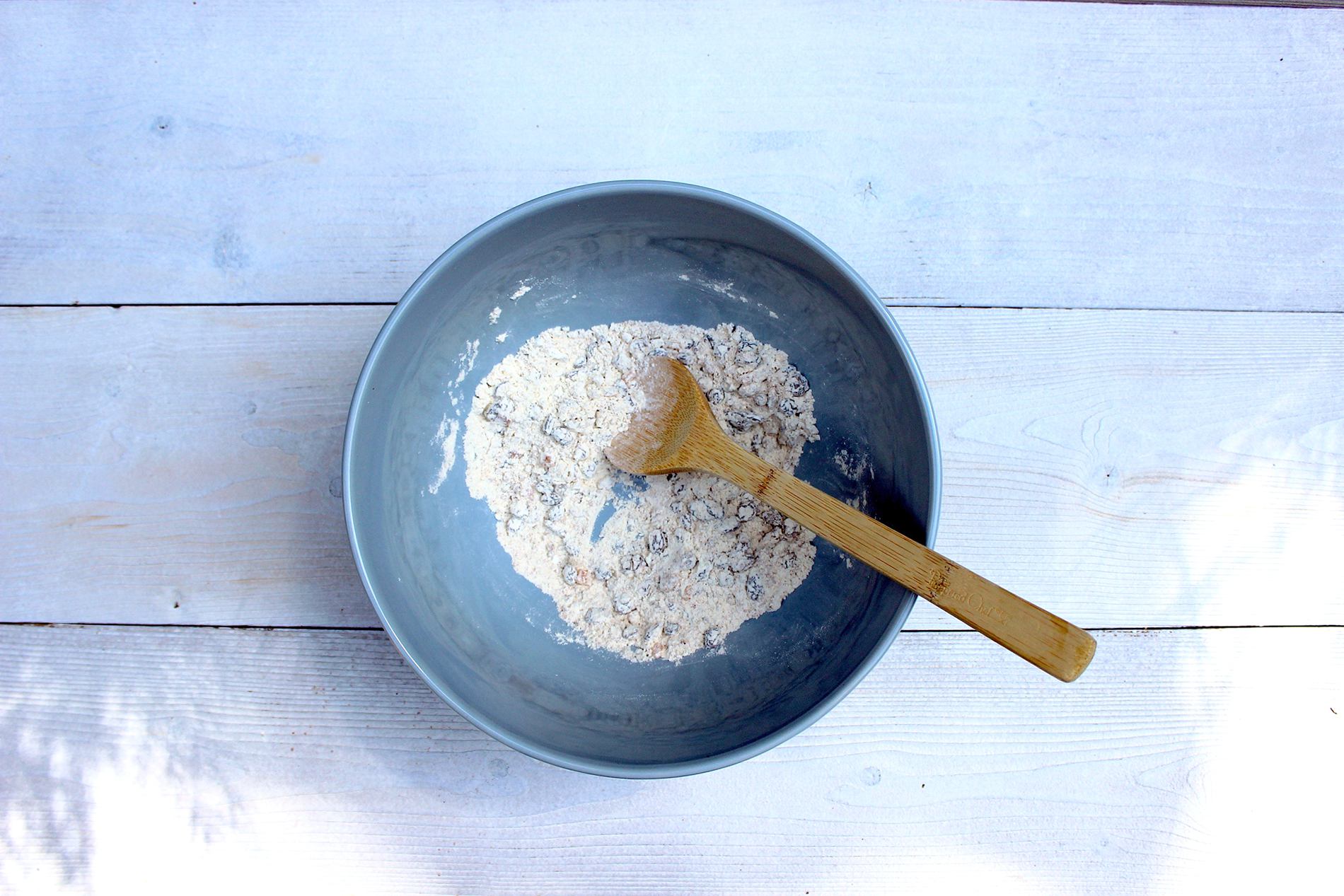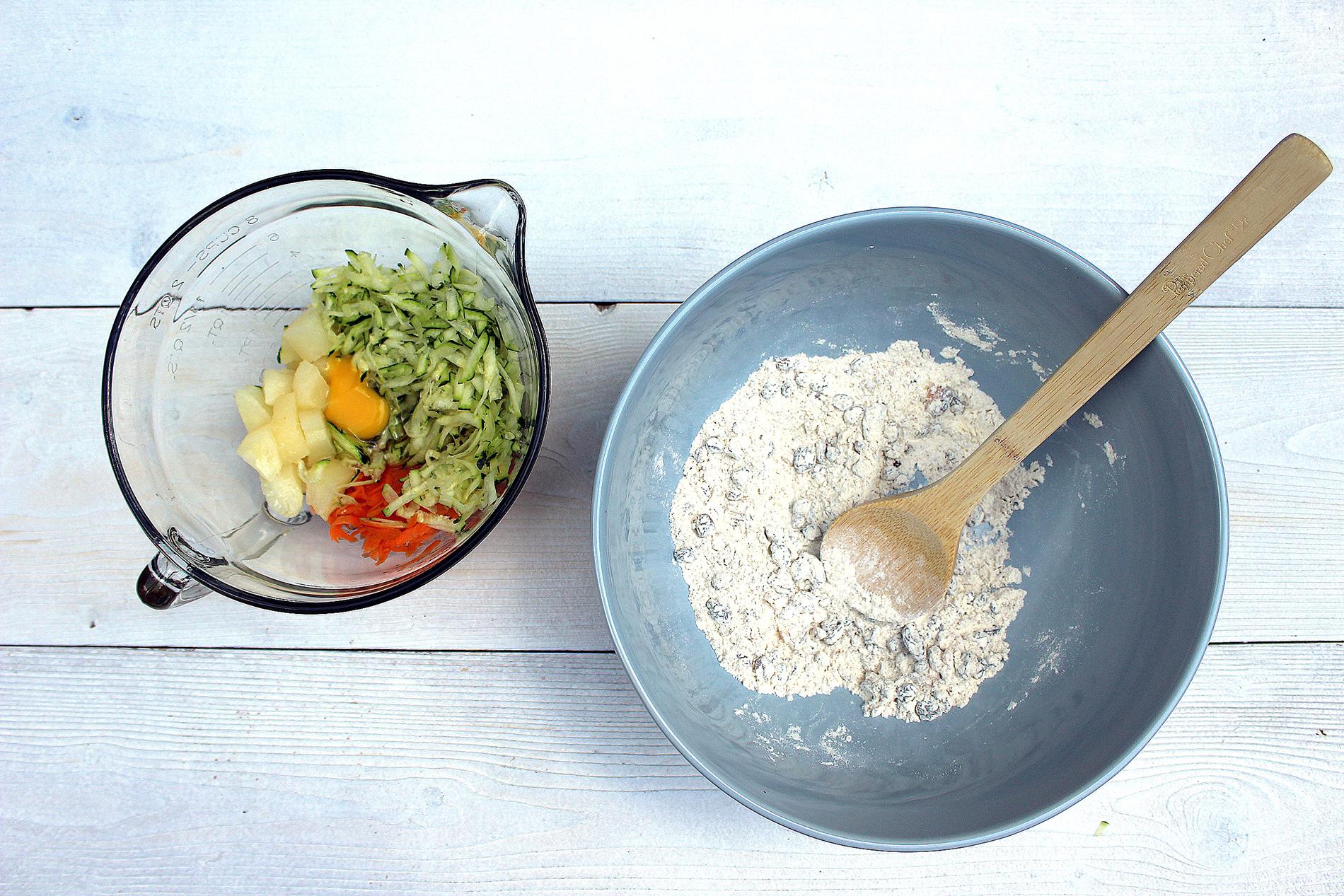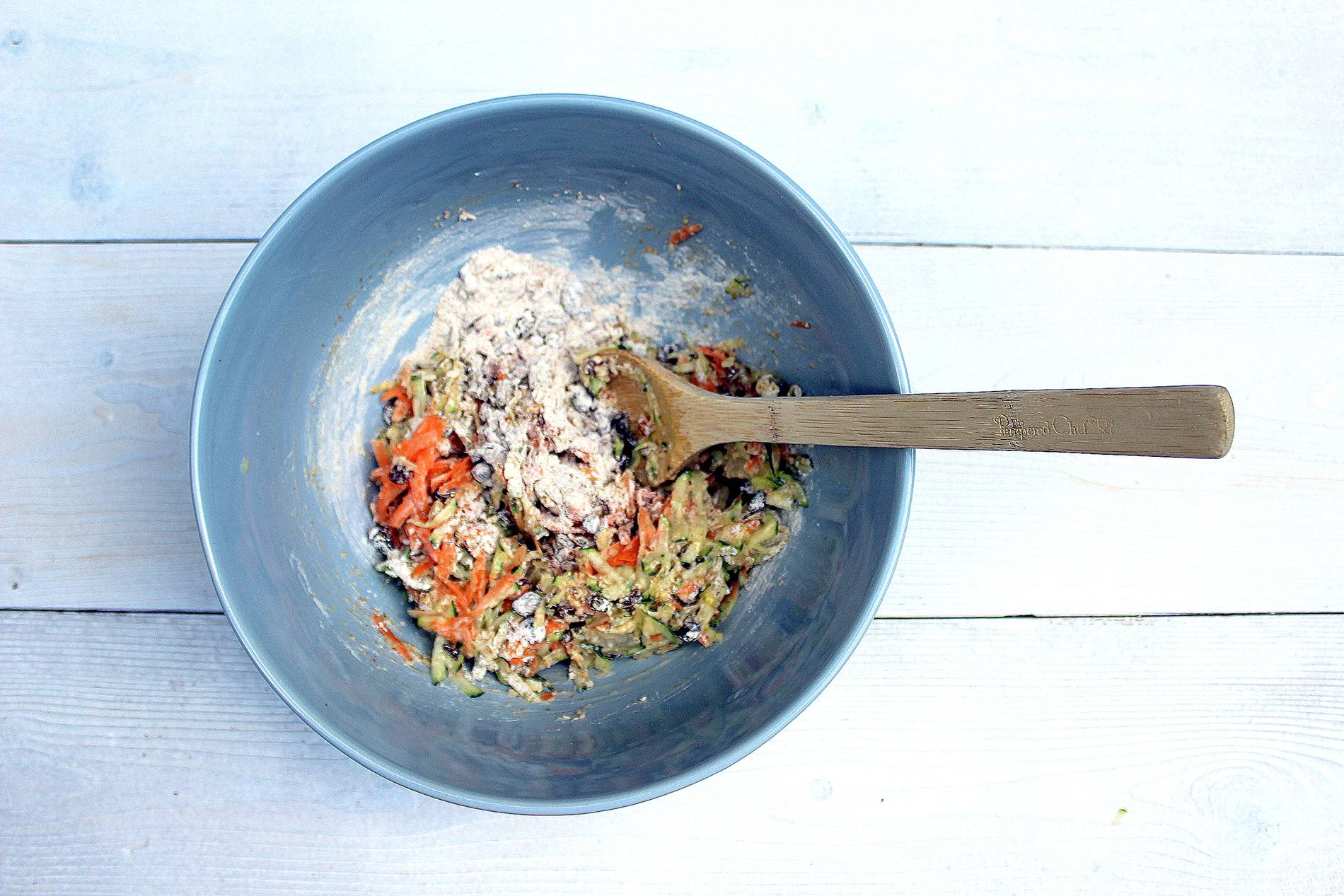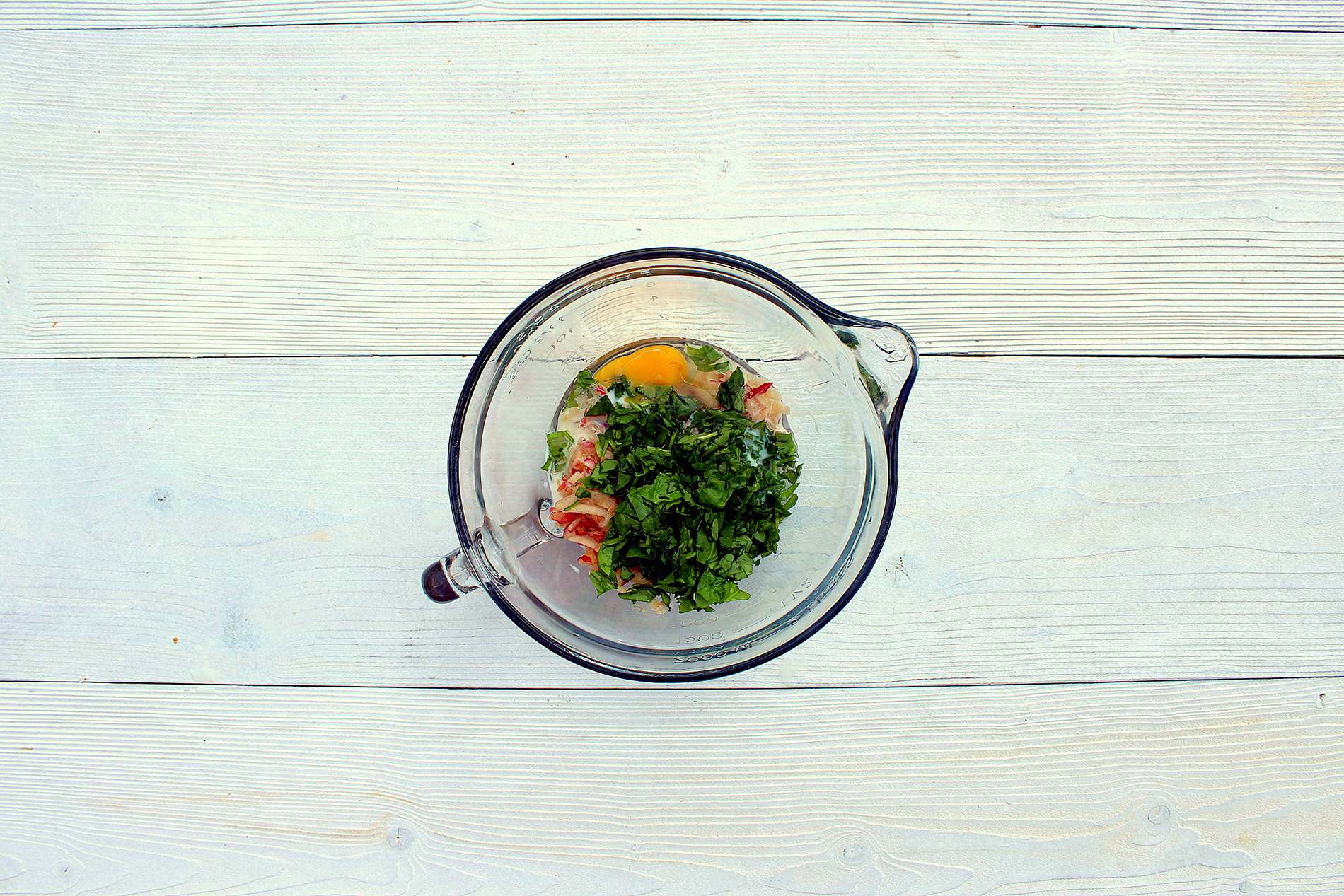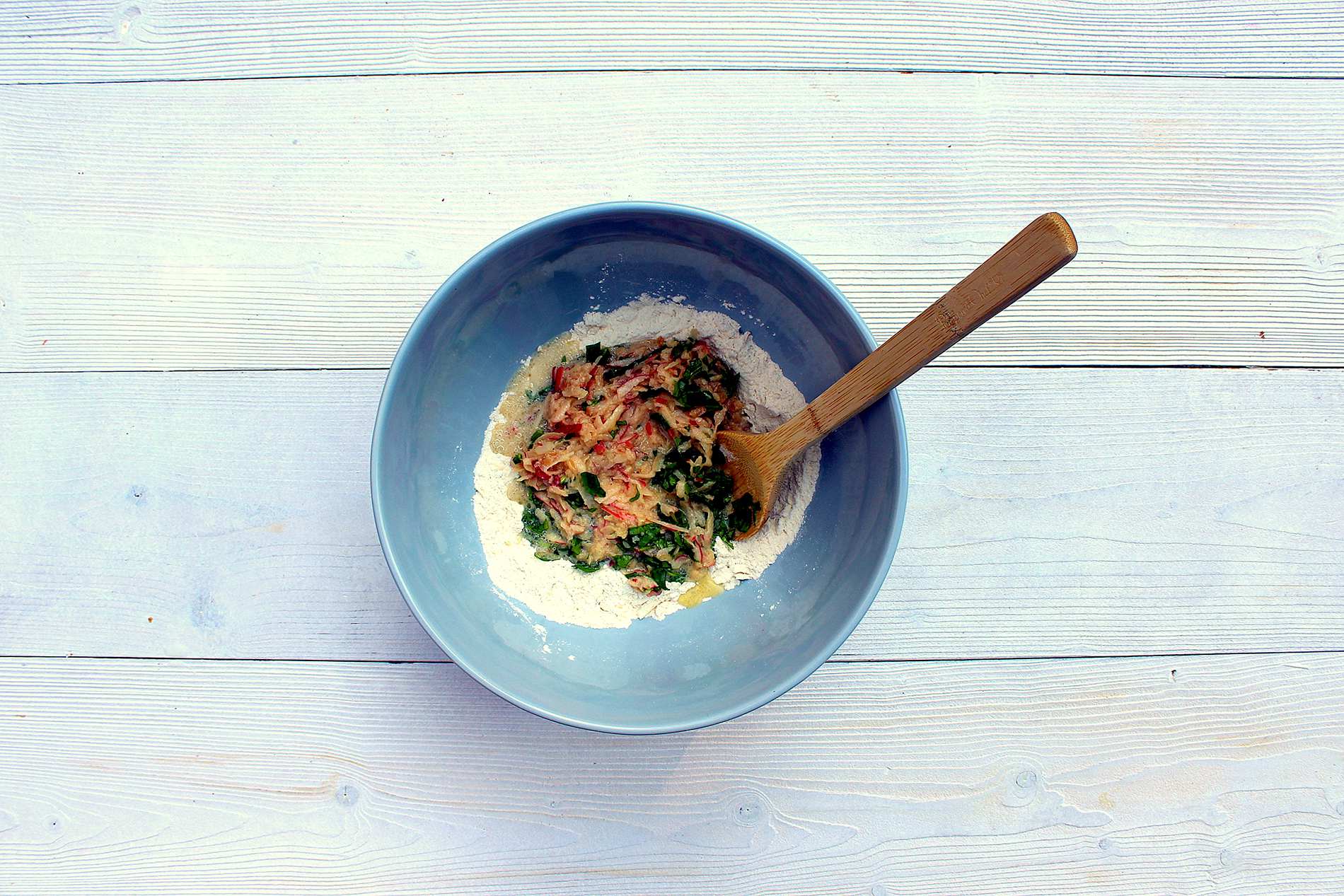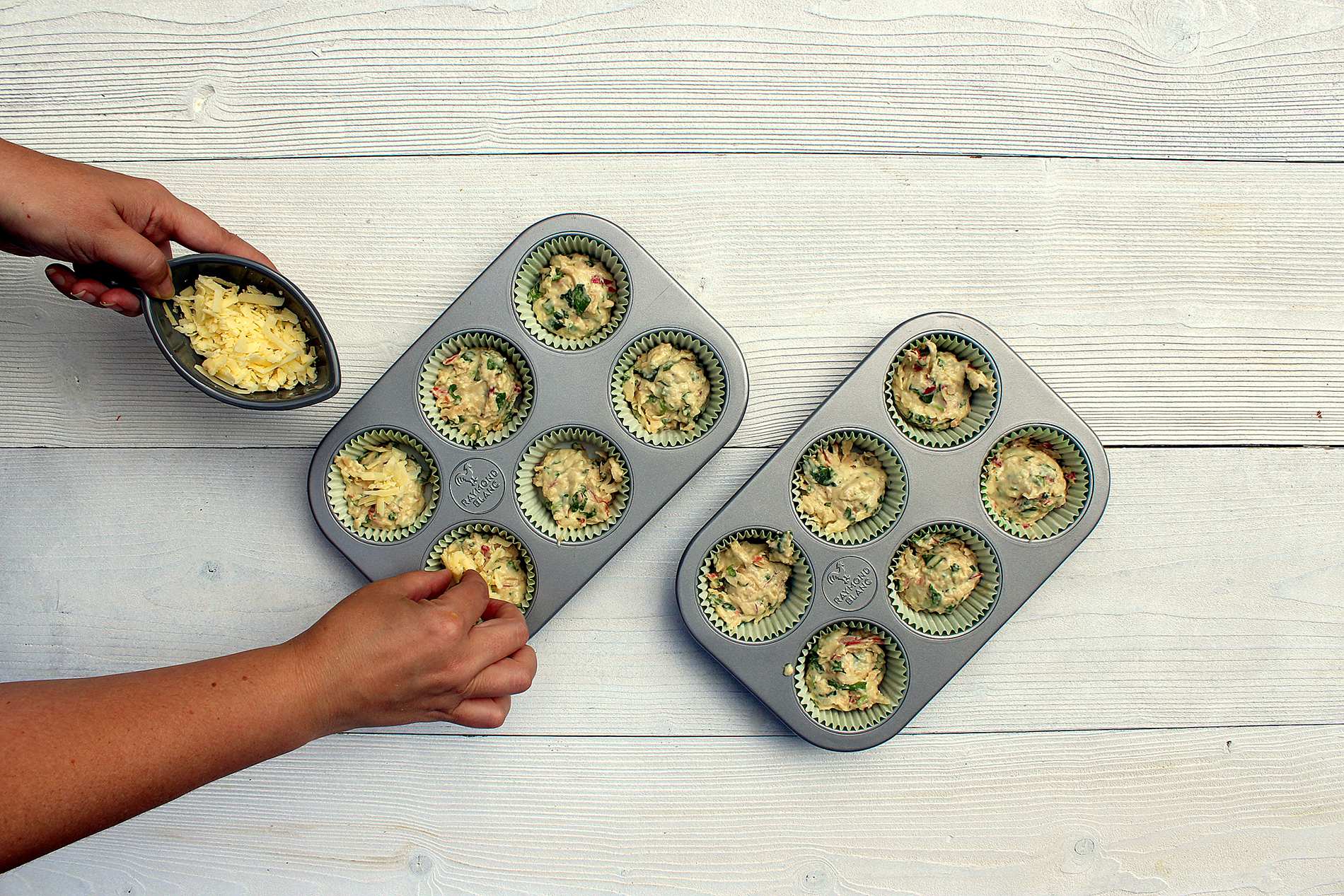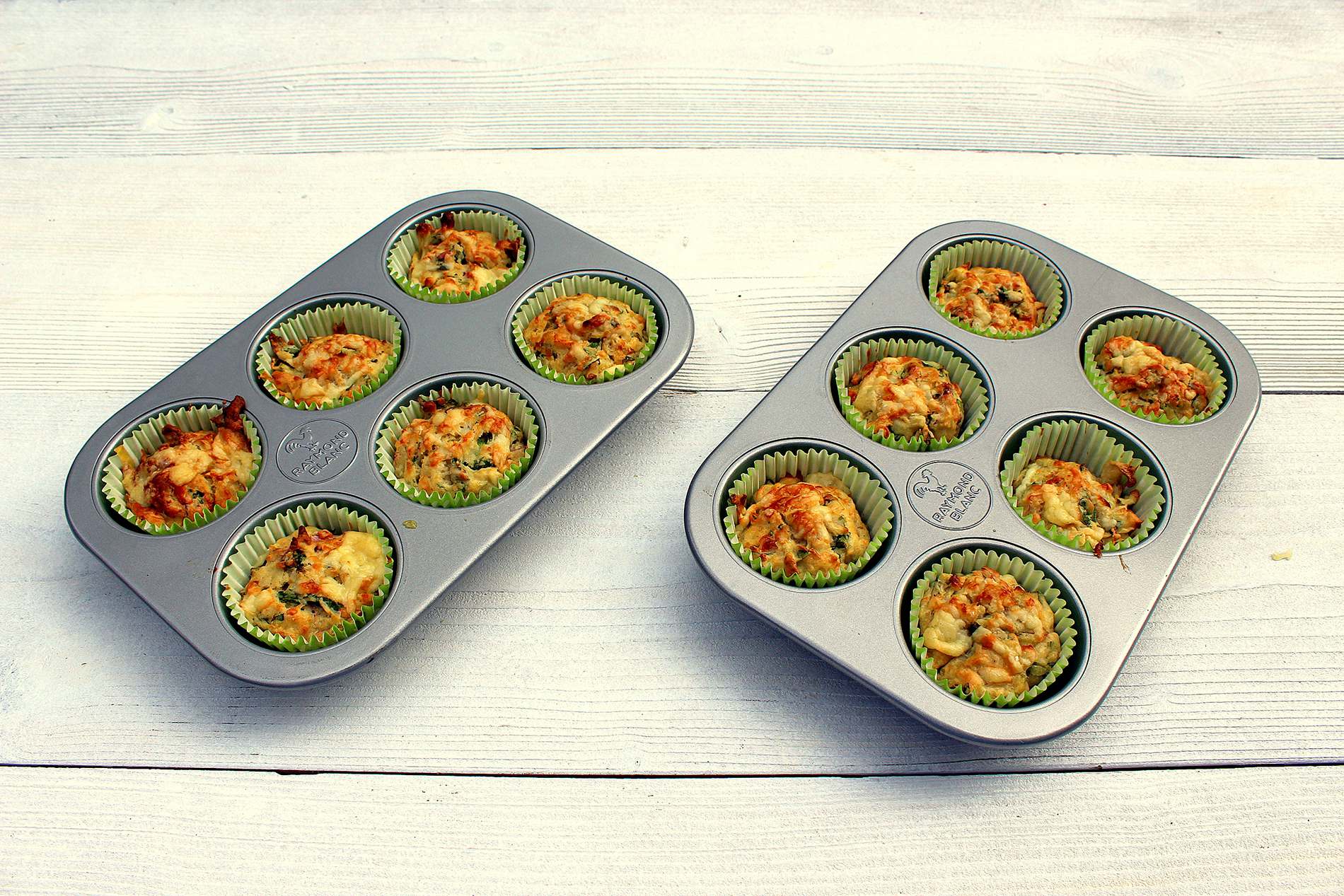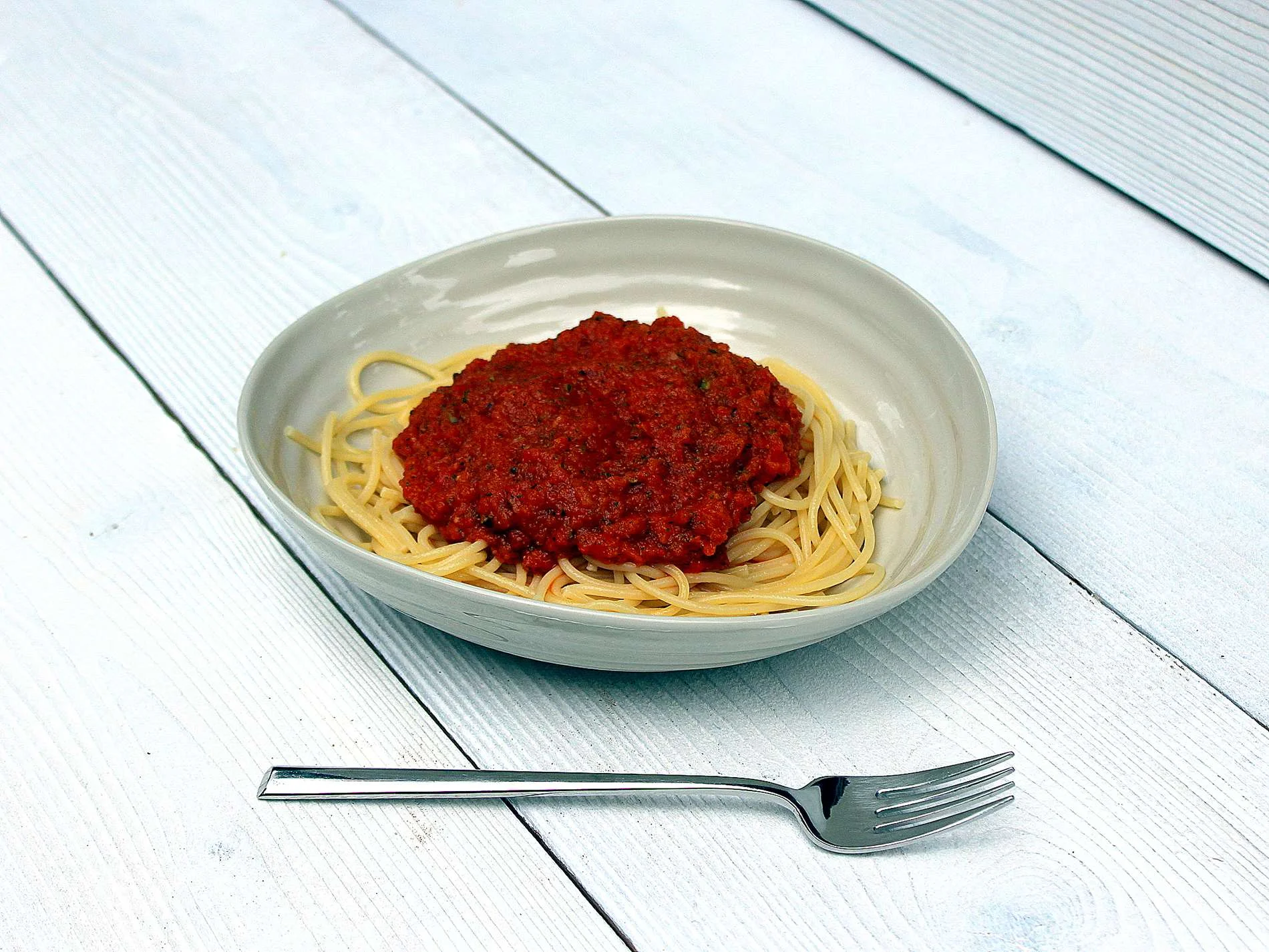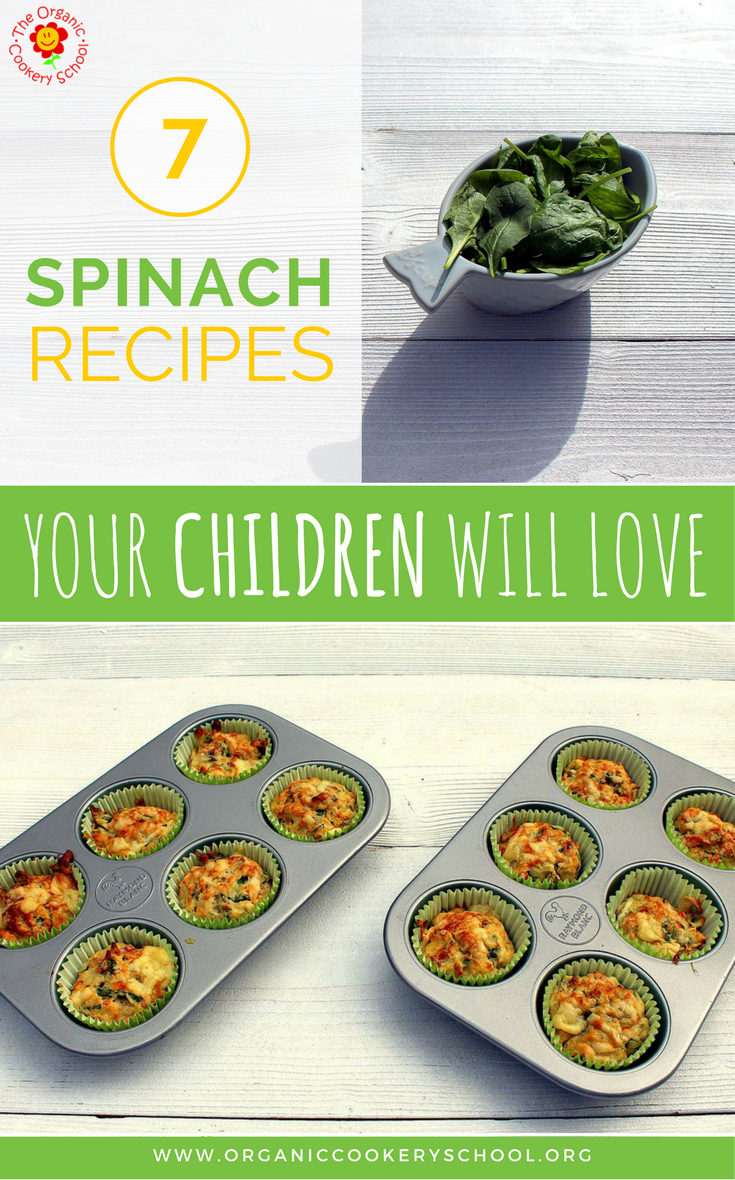ALentil Shepherd’s Pie - a vegetarian family favourite as featured in our Knorr meat-free masterclasses.
Ultimate Crumble Recipe - with Vegan and Gluten-free Variations
Storytime Chefs: Rainbow Fish Digestive Biscuits
makes 10-12 biscuits
Here’s the second recipe in Rainbow Fish themed Storytime Chefs series, our monthly virtual cookery and book club for families with children aged 2-10 years.
Read more about this month's book choice here, or try our delicious veg pack Rainbow Fish Pizzas.
equipment:
You will need:
- an apron and clean hands
- two baking sheets, lined with greaseproof paper
- one large mixing bowl
- one small bowl to melt butter
- weighing scales
- measuring spoon
- a wooden spoon or silicone mixing spoon
- a fish shaped cookie cutter
- a rolling pin (and optional rolling mat)
- a palette knife or similar to lift biscuits
- a cooling rack
- oven gloves
Ideas for decorating your rainbow fish biscuits:
To ice or not to ice?
It’s pretty impossible to decorate biscuits (and avoid a mini sugar rush) without using some form of icing, chocolate or sweets and whilst this isn't the healthiest of food stuffs, it is part of the magic of this activity for your kids. These biscuits are delicious on their own, and are not overly sweet, so we normally decorate about half and leave the remainder plain.
When it comes to choosing decorating ingredients, we prefer to go as natural as possible, choosing options which don’t contain palm oil, artificial colours and flavours, and are organic where ever possible.
Baking and decorating biscuits/cakes (especially Rainbow Fish ones) isn’t an everyday event - just like eating birthday cake isn’t an everyday event, which most children understand.
Here are some options (either fruity or chocolatey):
- A little icing, white or naturally coloured (we used these freeze dried fruit powders from Healthy Supplies to colour/flavour ours)
or
- Melted chocolate (milk or white)
- Colourful dried fruit ‘scales’ (eg cranberries, chopped apricots, golden raisins, chopped mango) or snipped up Bear Fruit Yoyos/homemade fruit leather
- Naturally coloured/flavoured ‘Smarties’ or ‘Jelly Tots’ (eg Biona)
Where to get hold of a copy of The Rainbow Fish:
Link to Rainbow Fish on Amazon UK Link to Rainbow Fish on Amazon US
Or don’t forget to check your local library.
By shopping with the links we have provided, we may earn a small referral commission which goes straight back into our community outreach projects for vulnerable families It also doesn’t cost you anymore. Thank you!
Storytime Chefs : Rainbow Fish Pizzas
makes four individual pizzas
These quick and healthy pizzas are inspired by The Rainbow Fish (by Marcus Pfister), and encourage children to pile up on a variety of different coloured veggies, helping them meet their five a day targets and eat a rainbow too. I’ve honestly never seen my five year old so keen to load up with every colour of vegetable.
For speed and convenience, shop-bought pitta bread works fine (Waitrose and Ocado stock organic versions). Pitta are easy to cut to shape with sturdy kitchen scissors, and both wholemeal and white pitta both taste great in these pizzas.
Trimming into a fish shape can be a bit awkward (there’s a good chance that little ones could accidentally chop off a tail!) but is great for developing motor skills - so be prepared to model where to cut and help little ones. (and have a few pitta spare just in case)
If you want to make your own pitta (which is great fun and everso easy) - we’ve included a recipe to make your own in the resources section of our FB group.
Next comes a topping of our veggie packed magic tomato sauce, but any good quality tomato pasta sauce will work (we like Seeds of Change and Mr Organic sauces).
Let your junior chefs get busy with the cheese grater, minding their fingers (and fingernails) before offering them a rainbow selection of veggie toppings.
*N.B. Children should always be supervised when cooking, and an adult should oversee the use of heat as well as all preparation involving sharp utensils.
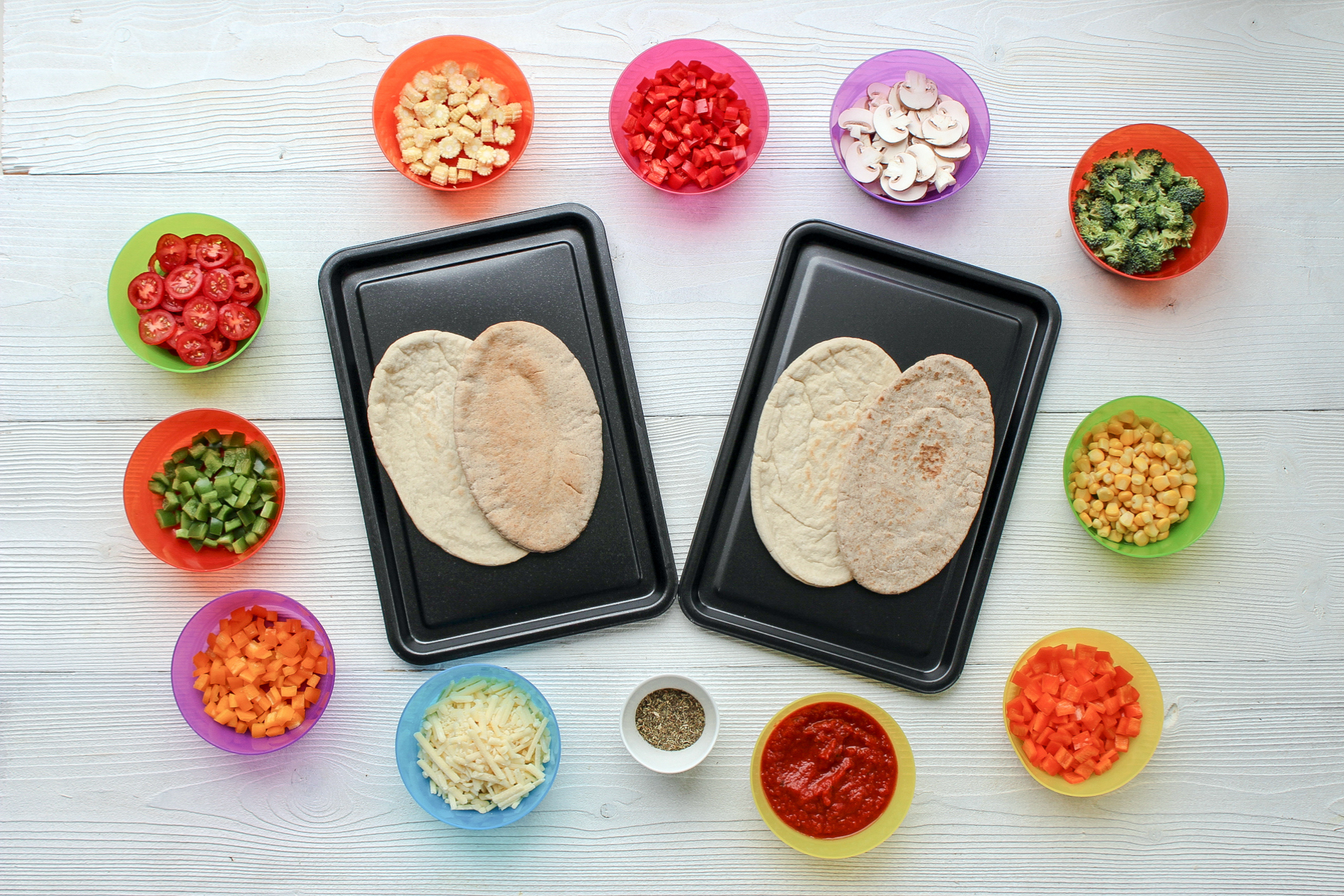
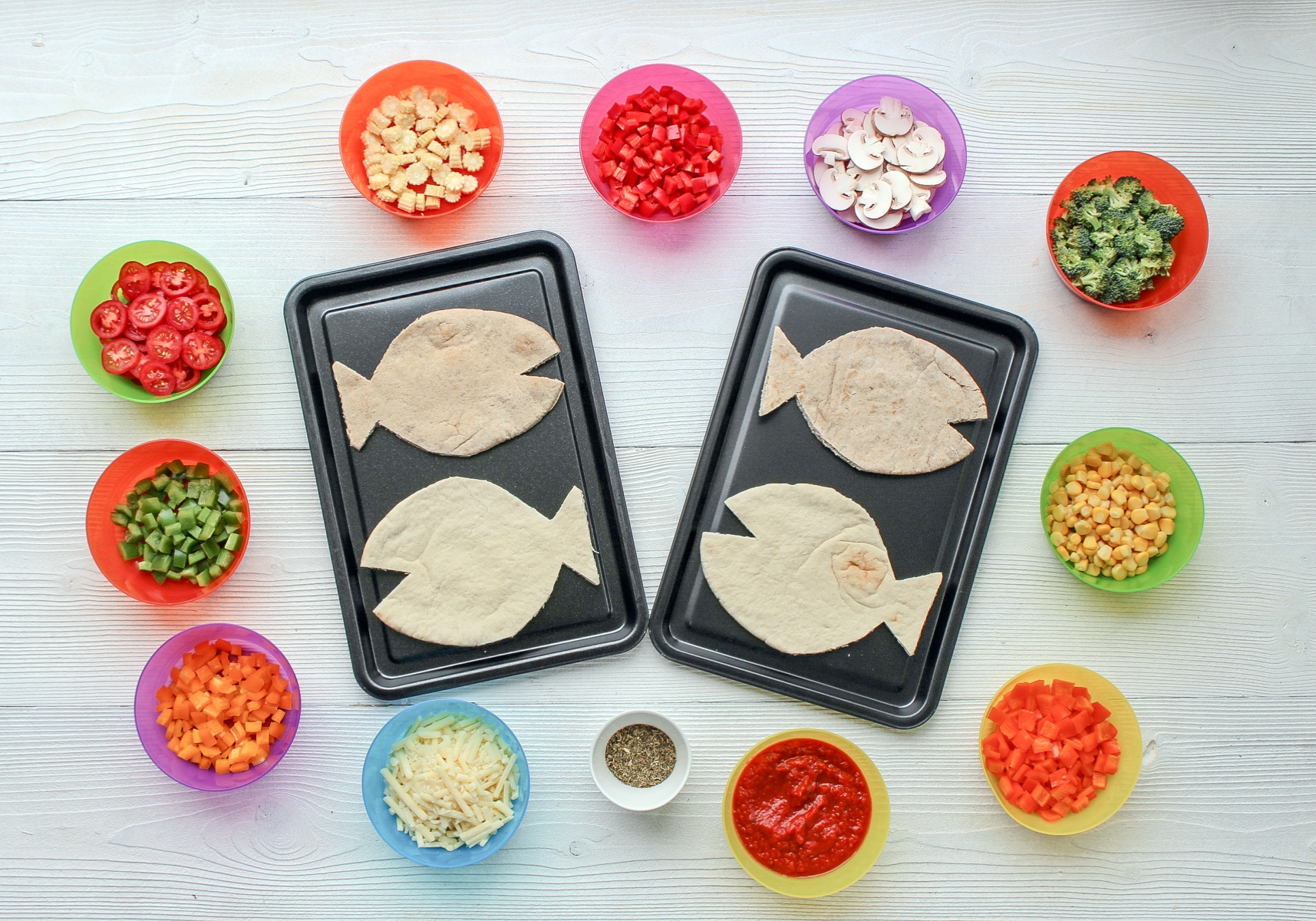
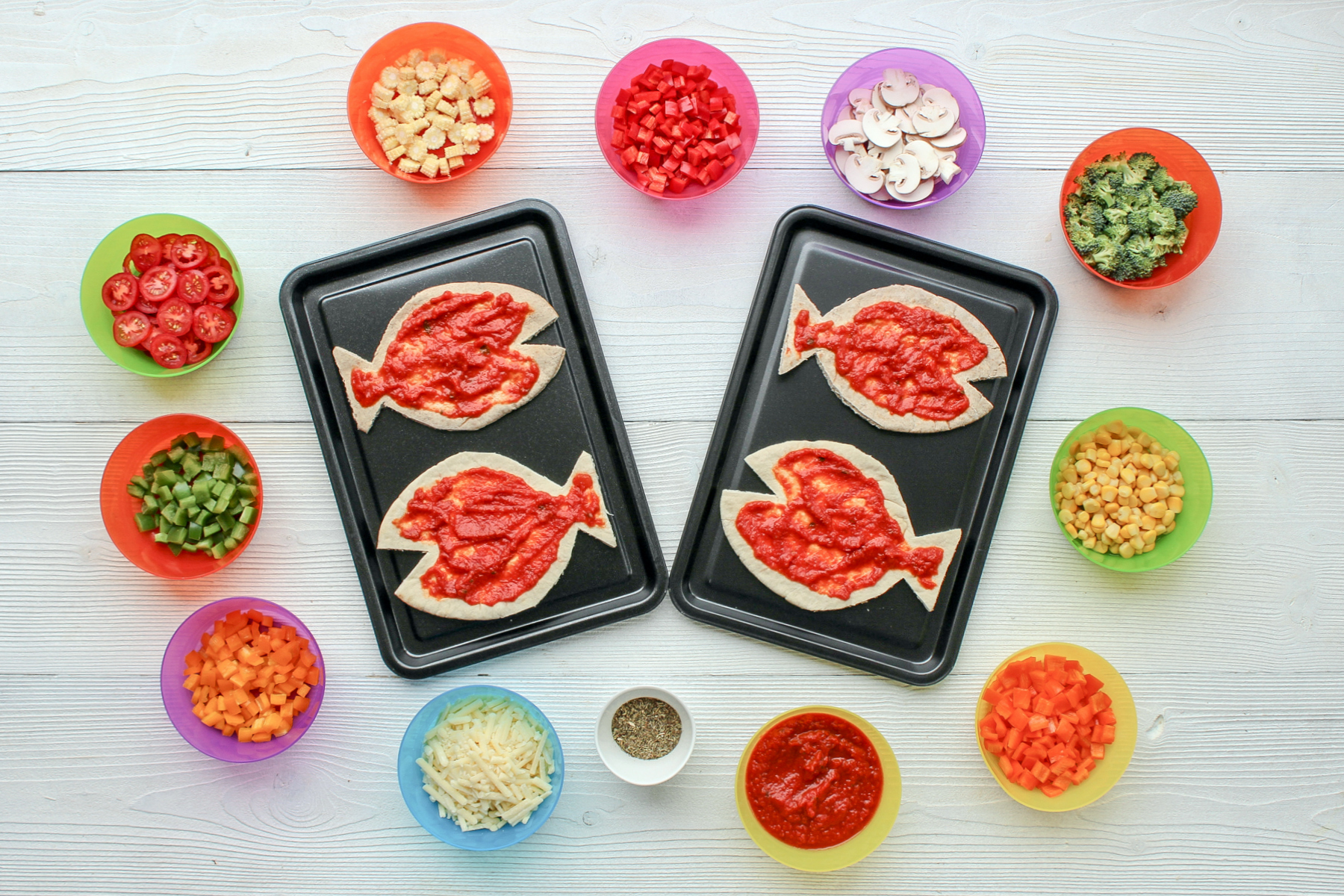

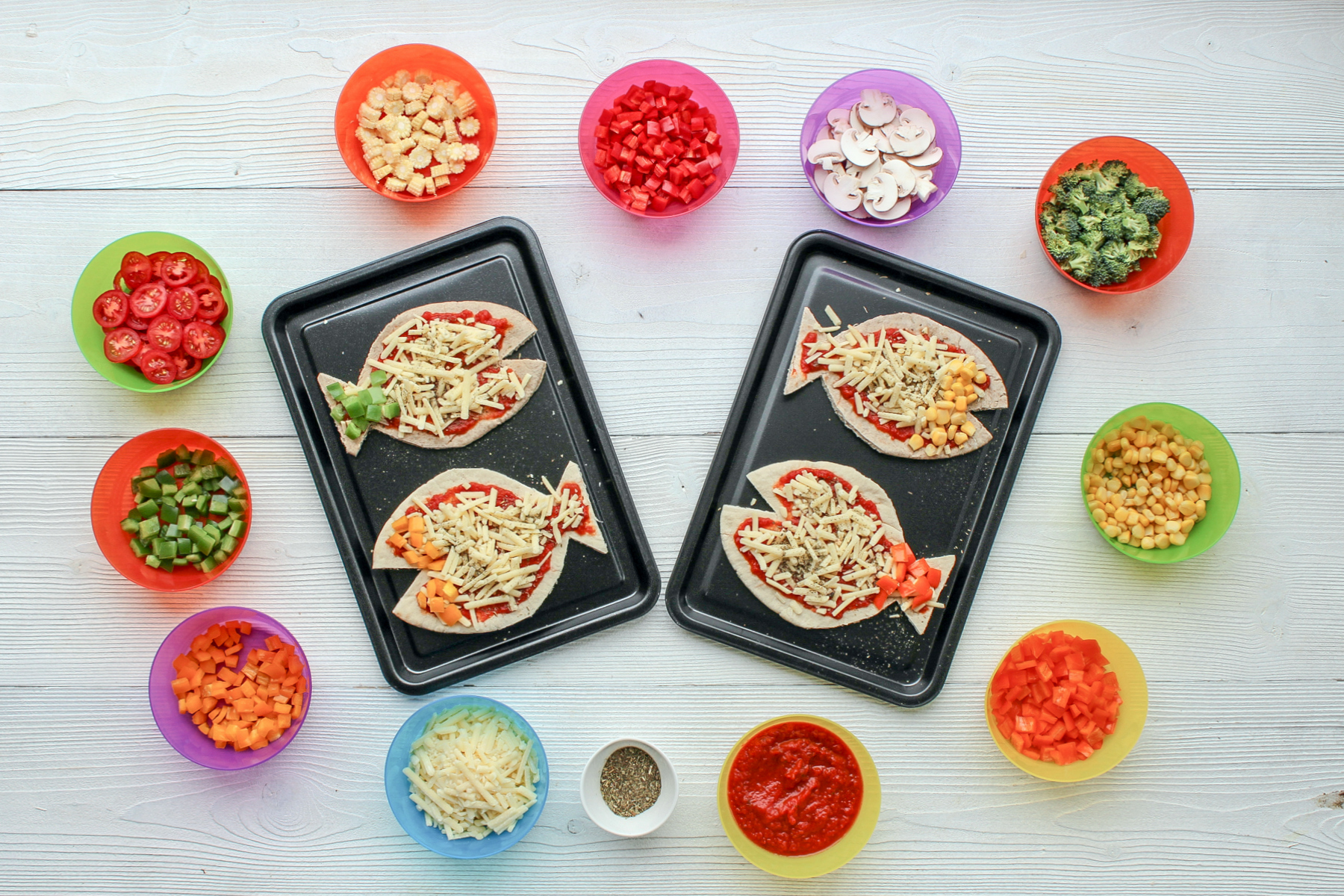
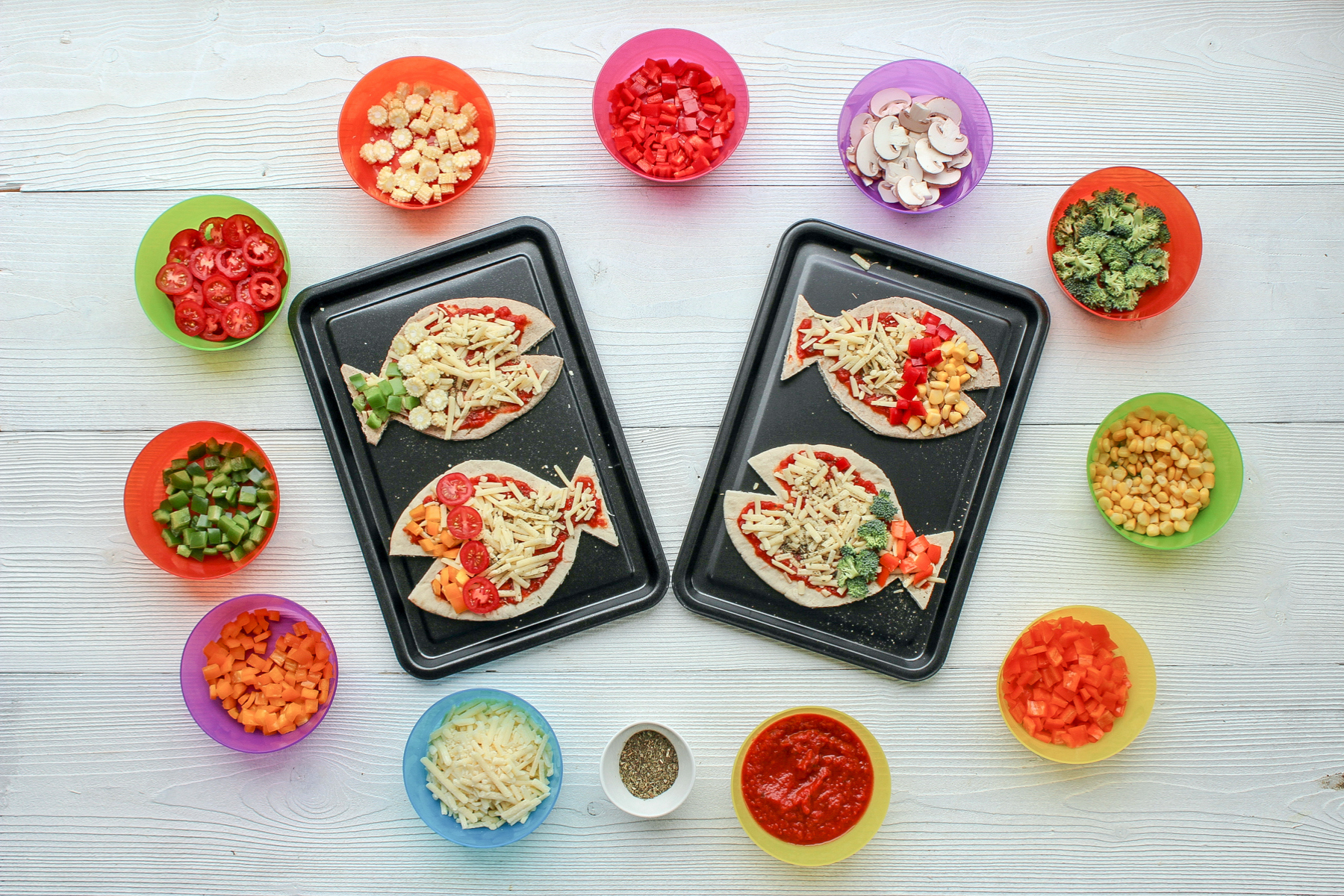
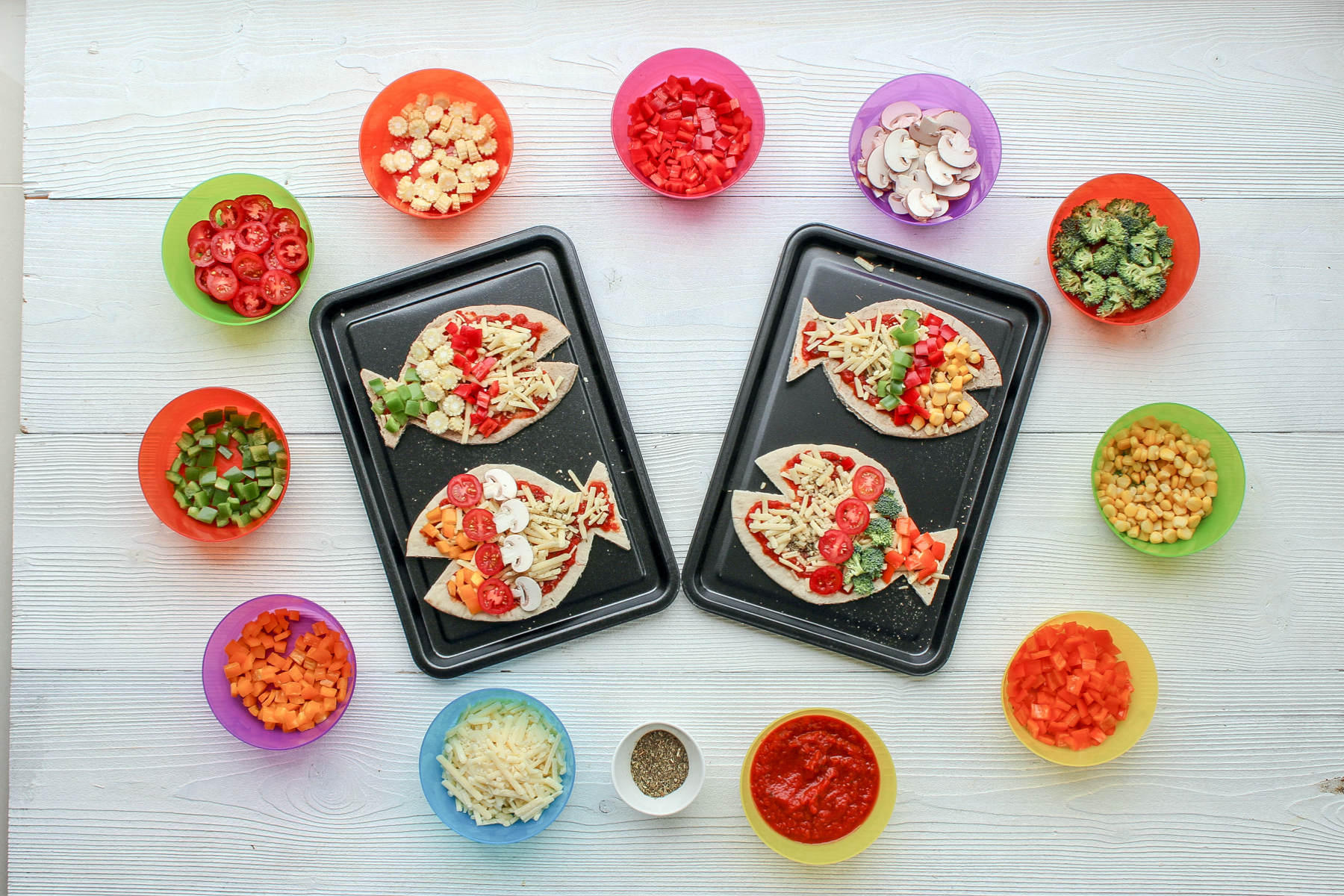
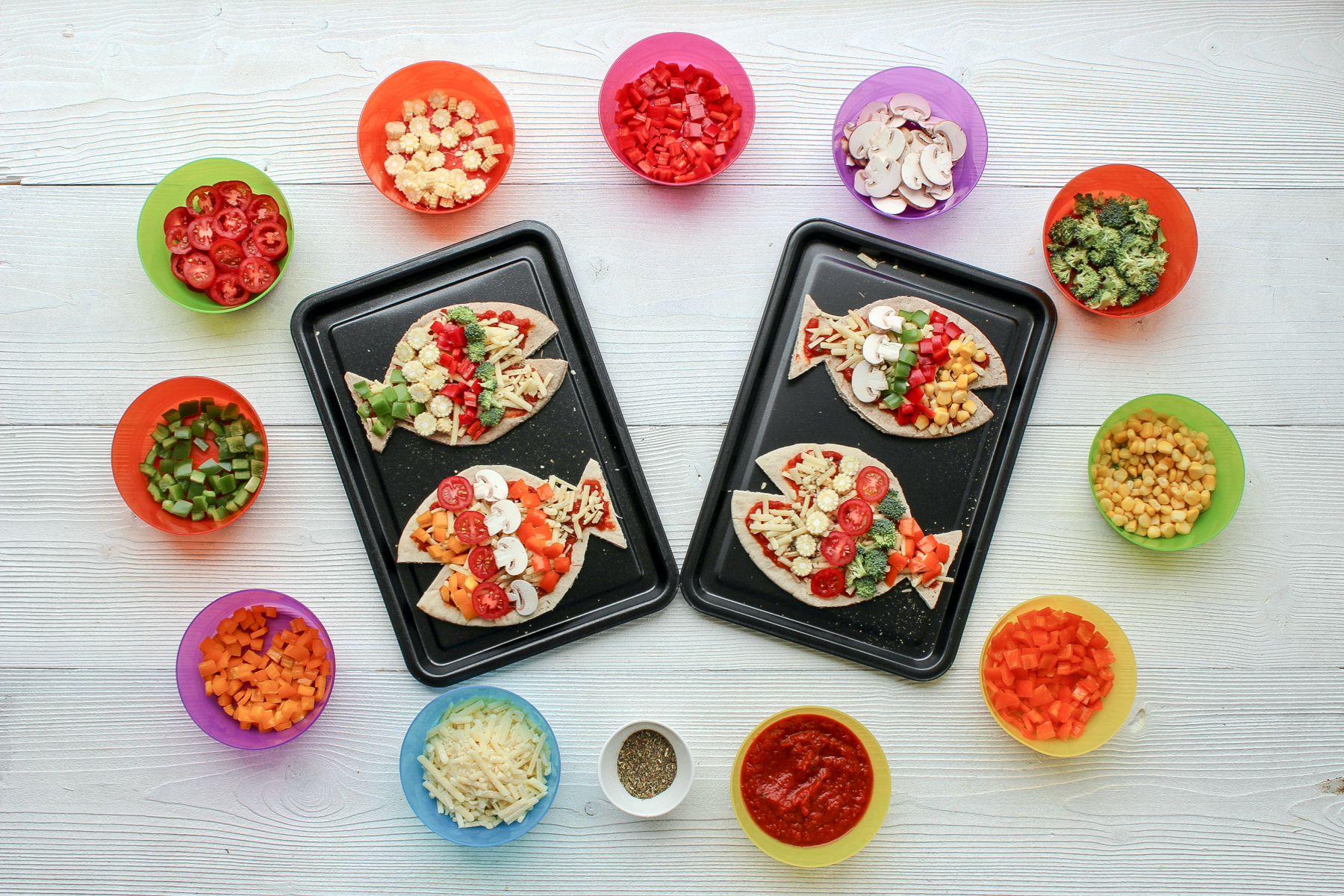
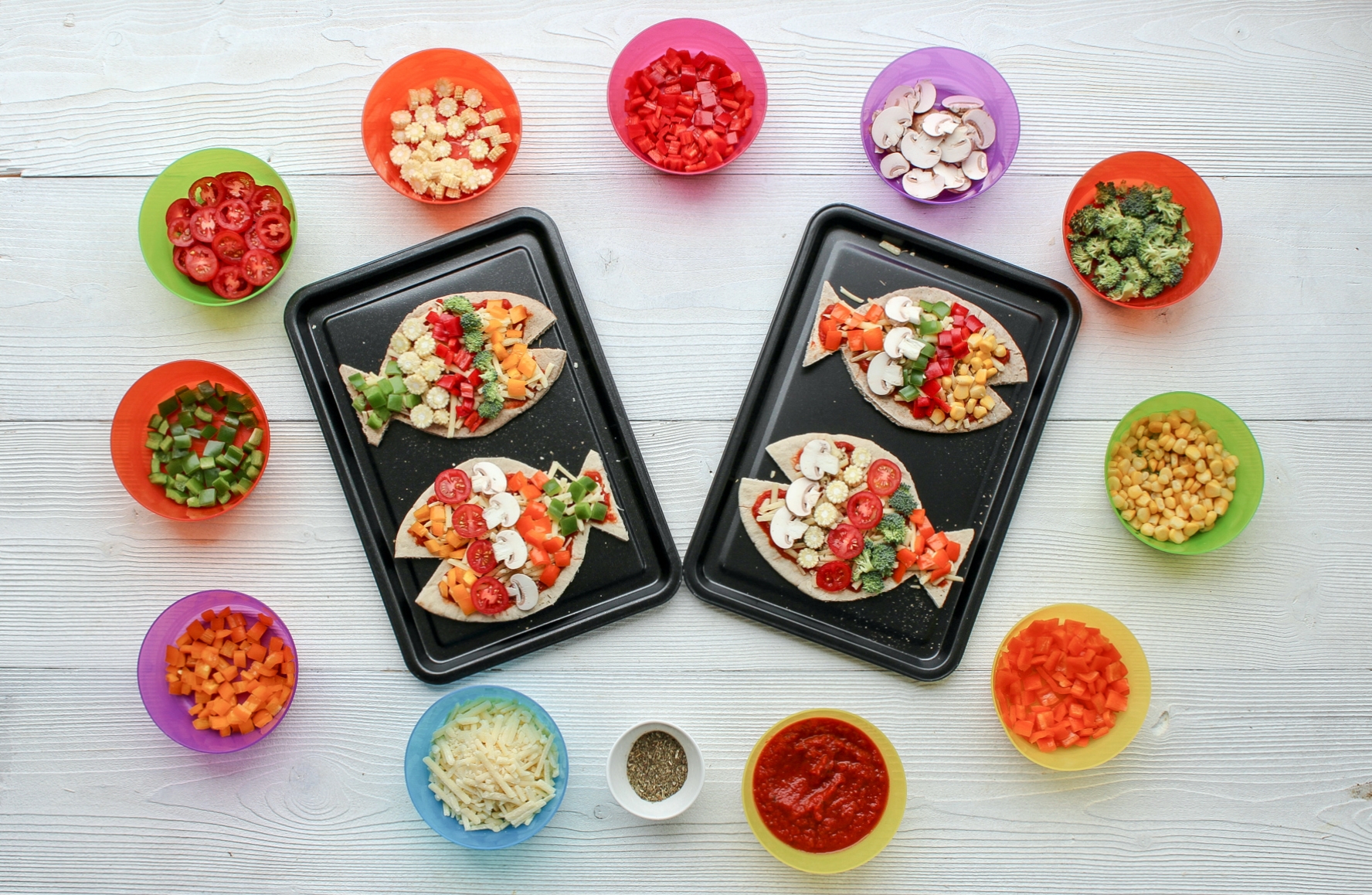
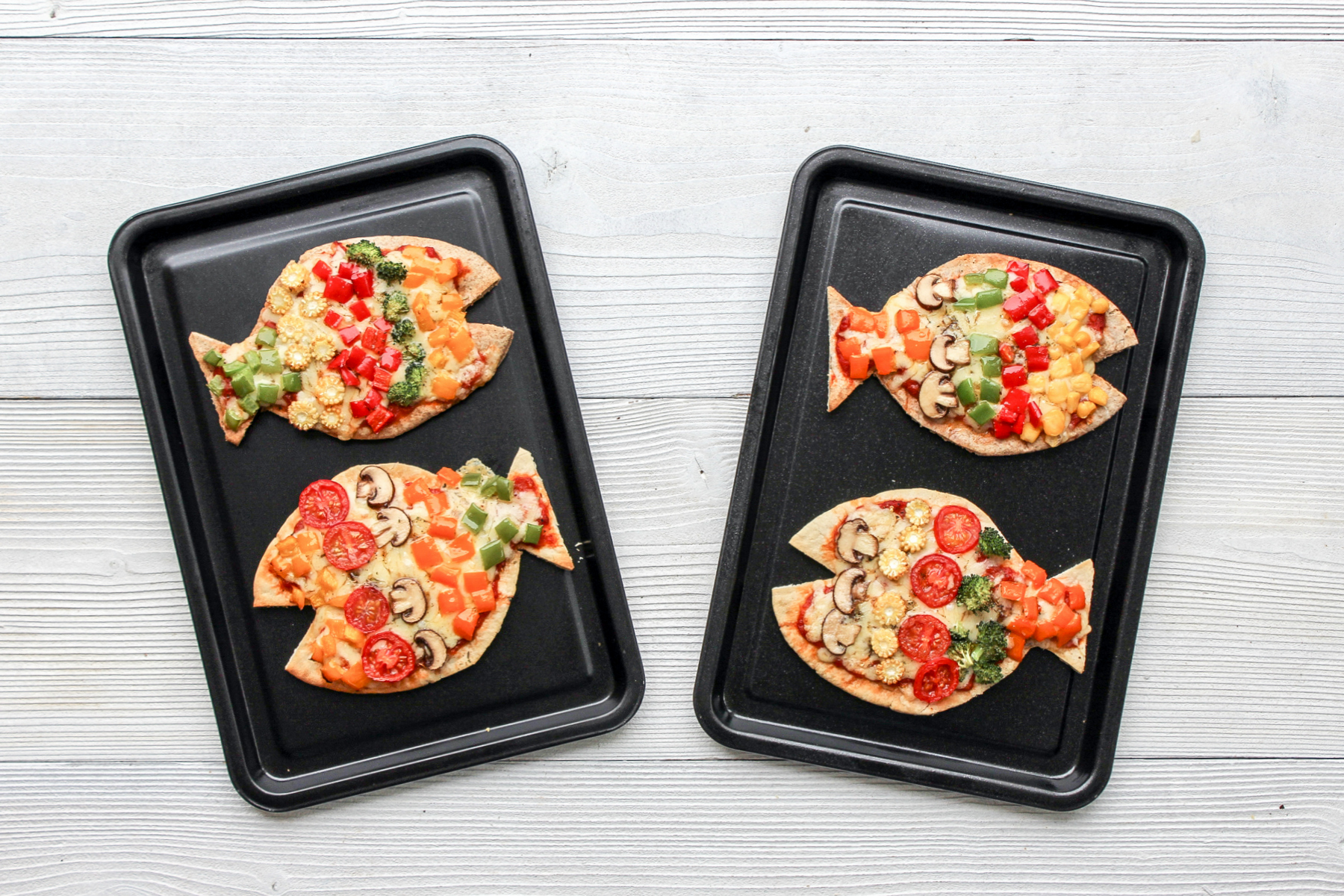
Developing cooking skills:
Encourage your children to do as much of the pizza prep as possible. We’ve highlighted the hands on skills they will be developing below:
Cut the pitta bread into a fish shape using scissors (adult/older child task unless very dextrous)
Spoon and spread pizza sauce (child)
Grate cheese and sprinkle over pizza sauce (child - may need support grating)
Take a pinch of italian herbs and sprinkle over cheese (child)
Prepare veggie toppings - dice and slice peppers, mushrooms, olives (child - younger cooks may need support slicing or offer strips which they can dice/snip with a safe knife or scissors)
Snip spring onions (if using) with scissors (child)
Build your rainbow fish pizza using fingers or a spoon to create colourful (veggie) rainbow scales (child)
Drizzle or spritz with a little olive oil - an oil spray works well for this (child - may need support)
Ask an adult to place in the oven for approx 12 mins (adult or older child)
Wait until cooled and enjoy.
Don’t forget to take some photos and share them with us in the Storytime Chef group (or tag us on instagram #storytimechef #organiccookeryschool)
Enjoy this? Try our Rainbow Fish inspired digestive biscuits.
Where to get hold of a copy of The Rainbow Fish:
Link to Rainbow Fish on Amazon UK Link to Rainbow Fish on Amazon US
Or don’t forget to check your local library.
By shopping with the links we have provided, we may earn a small referral commission which goes straight back into our community outreach projects for vulnerable families It also doesn’t cost you anymore. Thank you!
Peach Melba Chia Pudding
Here’s the second recipe in our series of chia seed puddings which are perfect for babies (over 6 months), toddlers and big kids too! Based on a classic peach melba, it’s perfect for summer months when peaches and raspberries are plentiful.
100 million times better than a processed kids’ dessert, it’s also got the thumbs up from Abby, our registered dietitian.
“This delicious dessert is bursting with vitamin C and fibre from the combination of fruits. Chia seeds add omega 3 to help healthy brain and heart development. They also provide healthy protein for normal growth and development.”
With no added sugar and vitamins and minerals galore, you'll want to try this with your fussy eater too.
Healthy Valentine Recipes Your Kids Will Love
We love Valentine’s day at The Organic Cookery School. Partly because it often falls in our February half term (so extra time for kids’ baking classes!) and because it’s Lucy’s wedding anniversary (awww!) on the 14th.
So whether it’s a weekend or school hols activity, Valentine’s is a perfect time to get hands on in the kitchen with your little ones.
Here are some our our favourite health(ier) recipes for Valentine’s.
These raspberry yogurt mousse pots from Eats Amazing are super quick and lower sugar than your average dessert.
Peanut Butter fans will go crazy for Healthy Little Foodies Raspberry Peanut Butter Freezer Bites
More than Just Carrots have also rethought the Jammie Dodger, with a strawberry chia jam and wholemeal hazelnut biscuit.
Frozen strawberries work perfectly in these healthy Strawberry Breakfast Bites from My Kids Lick The Bowl with oats, coconut and sunflower seeds.
All About Kids have reinvented the traditional Jammie Dodger with raspberry chia jam. Yum!
And if hummous is your thing, you can’t go wrong with this Beetroot Hummous recipe from Baby Gram
And Valentine’s is one time when breakfast balls needn’t just be for breakfast! Healthy Little Foodies’s Raspberry and Coconut ones look delicious and are perfect for little hands to roll.
Lucy and Clare over at The Happy Weaner have plenty of ideas for cute Valentine snacks
But one of our favourites has to be these super cute Valentine apple love bugs from Grace at Eats Amazing Who could resist?
We hope that’s given you a little inspiration for 14th February and we’d love to hear if you try any of the above.
Three Chia Seed Pudding Recipes your baby will love
Chia seed recipes are everywhere - but are they suitable for your baby / toddler? And what does this weird frogspawn like superfood taste like?
Chia originates from Mexico, where the seeds were highly prized for medicinal and nutritional properties, and even used as currency.
Left to soak for a few hours, the small seeds absorb water, milk and other liquids and have little flavour of their own. The soaking process is particularly important for young children as it means they are easily digested.
Image courtesy of Dr Axe
They are nutritionally rich in omega 3 and protein as well as a mix of vitamins and minerals, making them a perfect healthy pudding for your little ones.
Over the next three weeks, we’ll be posting three of our favourite chai seed weaning recipes, which are also perfect for toddlers, older children and adults alike.
Note from Abby Ixer, Registered Dietitian.
Chia seeds are nutritious, but not uniquely as other seeds also provide the same benefits. They can add an interesting texture to recipes, so are useful for increasing variety in the diet. Try flax, hemp and other seeds too. Suitable from 6 months +
Our first featured recipe (which we bet will be a hit with parents too) is Chocolate Chia Pudding, a rich creamy chocolate pud, sweetened with prune and vanilla extract.
Next week, we'll be sharing a coconutty Pina Cola Chia Pudding and finally a summery Peach Melba Chia Pudding Recipe.
Chocolate and Prune Chia Seed Pudding (for babies/toddlers)
So we’re cheating here - this recipe isn’t just for babies and toddlers and we give you and your older kids full permission to enjoy this as much as your little people.
However, that said, it is a perfect weaning recipe and full of protein, omega 3 and dietary fibre. Suitable from 6 months plus - there can’t be many puddings which pack as much goodness and flavour in. With no added sugar and plenty of vitamins and minerals, you'll want to try this with your fussy eater too.
This is the first of three chia seed pudding recipes we’ve developed for our Cooking for Baby parents. Enjoy!
NOTE:
This chocolate flavoured pudding may sound indulgent, but has a healthy twist. The sweet coconut milk complements the fibre packed prunes – great for ensuring a healthy gut and preventing constipation. Omega 3 is essential for young children to support brain development and good heart health, and is found in abundance in chia seeds.
Five Best Smoothie Makers for your family in 2017
So, it’s January, and we are all full of new year’s resolutions for our family’s diet and wellbeing. If that includes eating more fresh fruit and veg, and you haven’t yet invested in one, you’re probably thinking of investing in a smoothie maker.
But which to try? Will a stick blender do just as good a job or do you need a full on magic bullet/seed and nut blitzing top-of-the-range model?
We put five of the most popular models to the test in The Organic Cookery School Kitchen.
The Nutribullet
Our review: The ubiquitous Nutribullet magic bullet has everything you need to make healthy and delicious smoothies. It’s easy to clean, handles frozen fruit and veg well and makes short work of blitzing nuts and seeds.
It comes with a selection of cups in two sizes and lids, plus a spare blade, all of which are dishwasher proof.
It’s also come down considerably in price over the last year making it a good investment buy for the future.
The Nutri Ninja
Our review: Another big price reduction means the Nutribullet’s main competitor is now closer to £50, rather than the original £100 launch price. It’s powerful motor handles nuts and frozen fruit/veg well. The basic model comes with just one blade,however, and less cups than the Nutribullet. A good contender though, making a delicious blended juice in seconds.
KMix Blender
This traditional freestanding blender comes in an eye popping range of colours. It'sa great blender and looks amazing in situ, but with a glass jug, we prefer the Nutribullet or Breville (see below) for ease of use and safety when making smoothies with kids.
Breville Blend Active Family Blender
Our review: What a great buy! Rather than cups it comes with three portable bottles (which you may or may not prefer) and at this price point it delivers great value for money. It doesn’t feel quite as weighty as The Nutribullet or Nutri Ninja, but it handles frozen fruit and veg well.
Braun Stick Blender
Our review: We thought it only fair to give our trusty stick blender a chance too, and tested the Braun MQ100 model. It's not the cheapest handblender there (there are models from around £5). The limitations are that you can’t blend frozen fruit or veg (so no frozen spinach, avocado or bananas for us) or seeds. So whilst it’s great for baby food and soup, you will be limited to very ripe fruit and veg for your smoothies.
Our Conclusion:
Whether you've a fiver or £50 to invest, we are a big fan of homemade smoothies. We are big Nutribullet fans, but our second choice would be the Breville Blend Active Family Blender.
We'd love to hear what you think and your favourite smoothie recipes.
“All opinions in this article are unbiased and our own and we haven’t received any free products or renumeration for featuring these products.
We include Amazon affiliate links, and any affiliate income earned contributes directly to our free community cookery programmes for vulnerable families.”
Cheesy Broccoli Quinoa Bites
makes 20-24 bites
Babies and toddlers love to be independent and will feed themselves as soon as they are given the chance . Perfect for baby-led weaning, and a healthy lunchbox treat for older kids, you can offer these knowing they are the perfect hand held snack.
These portable nutrition bombs contain quinoa, a unique grain containing all of the essential amino acids that the body needs, which is also naturally high in fibre, B vitamins and magnesium as well as vitamin rich broccoli, eggs and cheese for protein.
They freeze really well too. Enjoy!
N.B. Children should always be supervised when cooking, and an adult should oversee the use of heat as well as all preparation involving sharp utensils.
Try something different
Try mixing finely chopped carrot or raisins instead of broccoli
Did you know?
Quinoa is a gluten-free wholegrain
You can get white, red or black quinoa.
White quinoa will cook to be the fluffier, whilst red and black will cook to be a little more crunchy.
Quinoa has the perfect balance of all nine amino acids essential for human nutrition, and provides a good amount of fibre and iron.
*Percent Daily Values are based on a 2,000 calorie diet for an adult. Your daily values may be higher or lower depending on your calorie needs. Infants and Toddlers will need less calories according to their age.
Click here for advice on how many calories your child needs.
Bread and Butter Pudding Muffins
MAKES 16 MUFFINS
Lunch box staple and after school treat. These never last long in our household and are ideal to cook with little ones. Great for using up stale bread and a portable form of bread and butter pudding. Need we say more?
Did you know?
These muffins are full of calcium (good for your bones) and contains very little added sugar because of the natural sweetness of the dried fruit.
Cheese, Leek and Potato Pie
Here’s a popular dish from our Cooking with Dad project and afterschool clubs. Using cheap winter veg, tasty cheese and dried herbs, it’s inexpensive to make and delicious. You children will love getting creative with the pastry scraps too – so make sure there’s plenty left for all their decorations.
N.B. Children should always be supervised when cooking, and an adult should oversee the
use of heat as well as all preparation involving sharp utensils.
Try something different
Try using alternative vegetables in this pie. Peppers, sweetcorn, courgettes would all work well.
Did you know?
- Cheese contains both protein and calcium – something we all need for growth and development.
- For other interesting facts about cheese visit: www.britishcheese.com
Summertime Soup
serves 3 – 4
Try this if you’re making our potato, pea and mint puree for baby – it’s delicious and delightfully green. Also known as Mean Green Soup, we’ve yet to meet a child who doesn’t ask for seconds. And we’ve heard that lettuce has soporific qualities – perhaps a good sleep inducing supper.
N.B. Children should always be supervised when cooking, and an adult should oversee the use of heat as well as all preparation involving sharp utensils.
Try something different...
- This basic soup can be varied with whatever vegetables are in season. Swap potato for sweet potato, butternut squash or pumpkin, and onions for spring onion or leek.
- For information about what’s in season visit: www.eattheseasons.co.uk
Did you know?
- Soups can be thick or thin. A thin, clear soup is often referred to as a consommé.
- The potatoes and peas in this recipe which are blended together give this soup a thick consistency which is filling and satisfying.
Sweet Potato and Orange Muffins
makes 12-18
The apricots in this mix make these muffins – which are low in added sugar and full of natural sweetness from sweet potato, carrots, orange juice and dried fruit. We made them in standard muffin cases here, but they are perfect as mini muffins too – split the mix and have some mum and baby/toddler-sized ones. Perfect for lunchboxes and freezable.
* Adult supervision is required for all chopping, and use of ovens.
Did you know?
- Sweet potatoes are an excellent source of vitamin A (in the form of beta-carotene).
- They are also a good source of vitamin C, manganese, copper, pantothenic acid and vitamin B6. Additionally, they are a good source of potassium, dietary fibre, niacin, vitamin B1, vitamin B2 and phosphorus.
Try this!
Swap chopped apricots for any other favourite dried fruit – cranberries, raisins, even chopped prunes!
Tomato and Paprika Biscuits
makes 20 small biscuits
There’s something pretty unique about these biscuits – our very anti-tomato 10 year old loves them! As does pretty much everyone who’s made them in our community classes (even fussy eaters!) They can be thrown together in minutes, require pretty much store cupboard staples (just need to make sure you have a couple of spring onions to hand) and are perfect blw or lunchbox staples.
* N.B. Children should always be supervised when cooking, and an adult should oversee the use of heat as well as all preparation involving sharp utensils.
Did you know?
- The English word “tomato” comes from the Aztec word, “tomatl”. Tomatoes are full of health: A good source of vitamins A, C and E tomatoes also contain potassium which may help lower blood pressure and calcium which is vital for healthy bones and teeth.
- To read more about the humble tomato visit: www.britishtomatoes.co.uk
*Percent Daily Values are based on a 2,000 calorie diet for an adult. Your daily values may be higher or lower depending on your calorie needs. Infants and Toddlers will need less calories according to their age.
Click here for advice on how many calories your child needs.
Courgette, Pear and Carrot Cakes
makes two small loaves or 8 - 10 muffins
Here’s another low sugar lunchbox treat, which the kids will love making. Dead simple, packed with veggies and naturally sweet with very little added sugar. We regularly make these in our Little Foodies toddler cookery classes, and everyone loves them.
Need any further excuse to try them?
Carrots are rich in beta carotene which is converted in the body to vitamin A. This nutrient is used to strengthen the immune system and to ensure good eye health. Courgettes are also a good source of vitamins A and C, as well as folate and potassium and fibre, which help to ensure a healthy bowel and prevent constipation in little ones.
*N.B. Children should always be supervised when cooking, and an adult should oversee the use of heat as well as all preparation involving sharp utensils.
Try something different
- Try changing the pear for another fruit or your choice. Apples, plums and peach would work well.
Did you know?
- Courgette (also known as Zucchini) contains more potassium than bananas and are a rich source of vitamin C and manganese.
- Carrots although usually orange in colour can also come in purple, red, white, and yellow varieties.
- The human body turns beta-carotene from carrots into vitamin A. Vitamin A is important for the health of our vision (including our night vision) as well as our bones, teeth and skin.
*Percent Daily Values are based on a 2,000 calorie diet for an adult. Your daily values may be higher or lower depending on your calorie needs. Infants and Toddlers will need less calories according to their age.
Click here for advice on how many calories your child needs.
Cheesy Spinach and Apple Muffins
Perfect for babies and toddlers
If your children are bored of sandwiches, these are great in lunchbox ( perhaps with some cooked chicken or a boiled egg for extra protein). Loved by toddlers, fussy eaters and baby-led weaners they freeze perfectly and are our secret weapon for sneaky some extra veggies into our little ones diets. We’ve made these as full sized muffins, but they work just as well as mini muffins for babies and toddlers.
*Percent Daily Values are based on a 2,000 calorie diet for an adult. Your daily values may be higher or lower depending on your calorie needs. Infants and Toddlers will need less calories according to their age.
Click here for advice on how many calories your child needs.
Cheesy Courgette Bake
to serve 2 adults or 4 children (double quantities for a bigger family)
Another toddler friendly veggie smuggling dish – get your kids grating the courgettes and squeezing out the excess water, and throw in some cooked new potatoes for a substantial veggie side. Perfect for BBQs or summer lunches, just double or triple the quantities to feed a family.
Try something different:
- Swap sweetcorn for peas, and add a teaspoon of chopped mint.
- Or added cooked new potatoes or cooked bacon to make a meal.
Did you know?
- Courgettes (also known as zucchini) are rich in Vitamin A and potassium. They are normally a bright dark green but can also be golden yellow.
*Percent Daily Values are based on a 2,000 calorie diet for an adult. Your daily values may be higher or lower depending on your calorie needs. Infants and Toddlers will need less calories according to their age.
Click here for advice on how many calories your child needs.
Magic Tomato Sauce
serves 4 as a pasta sauce
Another recipe on our ‘most popular list’. This basic tomato sauce is packed with flavour and can be blended smooth or chunky depending on your family’s preferences. It’s a great base for pizzas, pasta, bolognaise, lasagne, chilli and anything needing a rich tomato base. And look at the veggies we are sneaking in!
Serving suggestion:
Delicious served over pasta. Makes an excellent tomato base for pizzas. Can also be used as a sauce for chicken or fish or used as a dip for vegetables and pitta bread. Freezes well.
Try something different…
- Add other coloured peppers, aubergine, celery, a handful of parsley and /or basil to your sauce… a great way to get children eating some healthy veg.
- If you don’t have balsamic vinegar, substitute for a tablespoon of sugar.
Did you know?
- Tomatoes are a great source of vitamin A and C.
- Although the tomato is closely associated with Italian and Mediterranean cooking, the tomato originally comes from America and was only first introduced to Europe in the 16th century.
- For more information about tomatoes visit: www.thetomatozone.co.uk
*Percent Daily Values are based on a 2,000 calorie diet for an adult. Your daily values may be higher or lower depending on your calorie needs. Infants and Toddlers will need less calories according to their age.
Click here for advice on how many calories your child needs.
7 Spinach Recipes Your Children Will Love
Whilst available all year round, the UK spinach season is March - June. Often lauded as an iron-rich superfood (just think Popeye), it is also rich in vitamin K, vitamin A, vitamin C and folic acid, and a good source of calcium, manganese, magnesium, iron and vitamin B2.
Iron is important for making red blood cells, which carry oxygen around the body, and children need vitamin K to help normal blood clotting and to heal cuts and scrapes.
So what’s the best way to sneak this supercharged leaf into your family’s diet?
Blend it!
Spinach works brilliantly in smoothies and fresh juices. Blend with mango, strawberry, or banana which will mask it’s peppery leaves.
Add it to potatoes, cream and garlic (yum!). Here are two amazing dauphinoise recipes which include spinach.
Sweet potato and spinach bake GoodFood
Spinach and potato gratin Tesco RealFood
Blitz it in a homemade spinach and basil pesto (then stir through pasta, smear on bruschetta, serve with grilled fish or chicken)
Speedy Spinach Pesto by Mama's Kitchen on Food.com (Photo: May I Have That Recipe)
Pack it into some toddler sized mini muffins
Spinach Banana Healthy Muffins Tribe Magazine
Or our very own Cheesy Spinach Muffins
Want to find out more about the story of spinach?
Our friends at How Does it Grow share the fascinating story of a floating hydroponic spinach farm.








